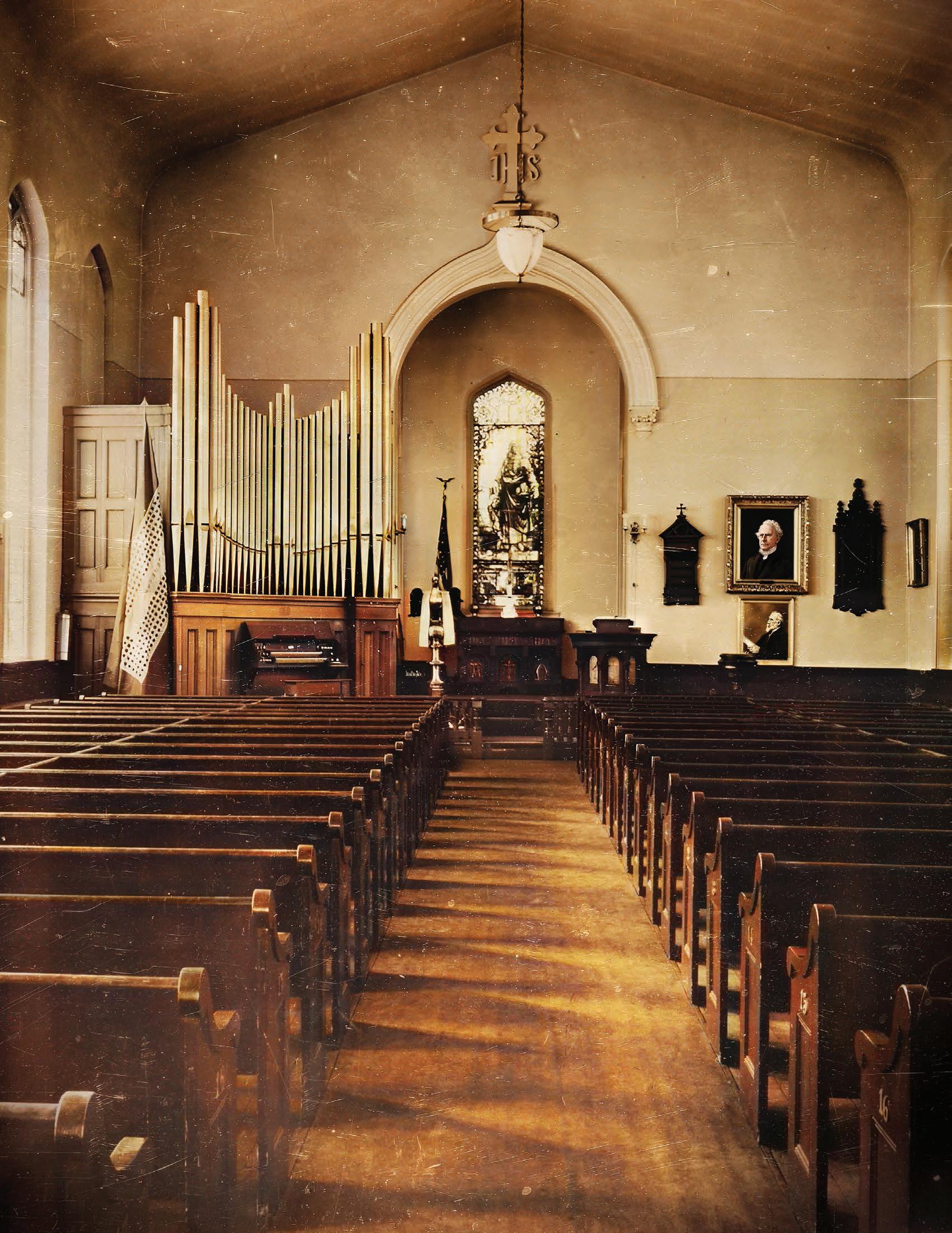

































































































The conservative rebels who recovered sacramental Protestantism in revivalist America














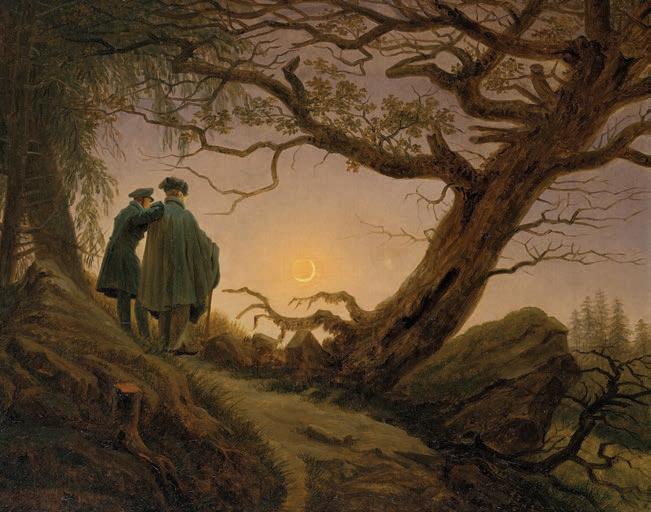
Understand the philosophies and philosophers that influenced the Mercersburg movement with these handy definitions.









EXPRESSIVE ART German idealist philosophy had deep roots in Romanticism. Romantic impulses appeared most obviously in the art of the time.
that knowledge is based on sense experience) associated with Thomas Reid and Dugald Stewart, who responded to problems in David Hume’s radically empiricist philosophy. They viewed ideas not as mental objects that represent reality to the mind, but as acts of direct perception. These ideas are then processed according to assumed principles (the existence of material objects, the existence of the knowing self, cause and effect, etc.) that comprise the “common sense” that all humans possess. This philosophy prevailed in early America.
Idealism—a philosophy that goes back to Plato’s conviction that true knowledge is the contemplation of eternal Ideas or “forms,” such as the form of the human being in which all people participate. It holds that Ideas are foundational to reality and that the general has priority over the particular. Nineteenth-century German idealism responded to Immanuel Kant, who taught that reason can know things as they appear to us (phenomena) but not things in themselves (noumena). Hegel, however, argued that if reality is ultimately ideal and the unfolding of “Absolute Spirit,” then we can know it through reason after all. Hegel famously framed this process in terms of conflict between the “thesis” and the “antithesis,” which issues in a higher “synthesis.” Schelling often spoke of this historical development as the unfolding of living “organic” laws or principles.

Evangelical catholicism—a term that arose in the context of nineteenth-century efforts to retrieve more creedal, sacramental, and liturgical dimensions from the historical Great Tradition (sometimes called “small-c catholicism”) that had informed classical Protestantism.



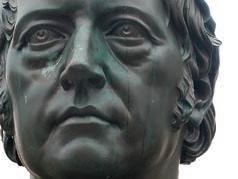












New Measures revivalism —an approach to revivals associated with the ministry of Charles Finney, which considered revivals something you could plan and prepare for rather than receiving as a sovereign gift of the Holy Spirit.

Mediating theology—a diverse mid-nineteenth-century theological movement in Germany made up of Lutheran and Reformed figures, such as the church historian August Neander, and theologians, such as Julius Müller, Karl Ullmann, and Isaak A. Dorner (see pp. 38–41), that sought to keep the intellectual acheivements of Hegel and Schleiermacher alive while being faithful to evangelical Protestantism and Christian orthodoxy. In this way they synthesized or “mediated” between modern scholarship and the Christian tradition. Mercersburg can be viewed as an effort to apply the insights of the German mediating theology to the American religious situation.

Scottish common sense realism—a form of British empiricism (the conviction

A KEY DIFFERENCE Hegel understood humans religiously in terms of a quest for radical freedom, while Schleiermacher emphasized radical dependence upon God.
The Mercersburg movement drew some of its philosophical ideas from the well of nineteenth-century German thinkers: most significantly, philosophers George Wilhelm Friedrich Hegel (1770–1831) and Friedrich Schelling (1775–1854), and theologian Friedrich D. E. Schleiermacher (1768–1834).
G. W. F. Hegel—among the most influential figures in German idealist philosophy. Hegel was an heir of the
INTELLECTUAL BRIDGE Schleiermacher (below) influenced John Nevin and Mercersburg, though Nevin also criticized aspects of Schleiermacher’s theology.
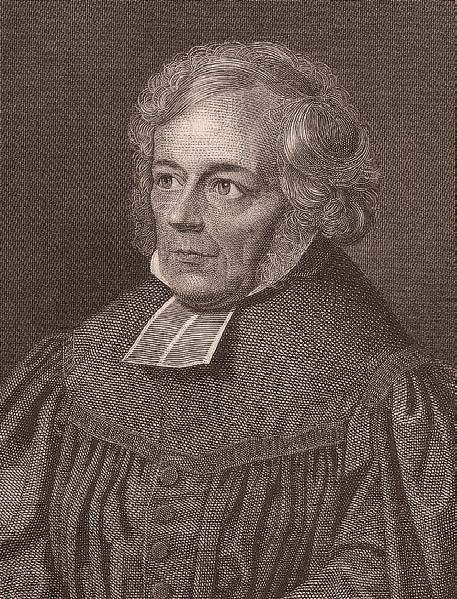
Enlightenment movement and a student of ancient philosophy and Christian theology. He critiqued and sought to address the epistemological problems introduced by Kant’s noumenal / phenomenal distinction. In his book, Phenomenology of Spirit, he argued that reality as we experience it is the dialectical (conflicting impulses that resolve in a higher synthesis) unfolding of Absolute Spirit, and that it can be known through reason. Hegel studied at Tübingen’s seminary, where one of his roommates was Schelling. His writings, famously difficult to decipher, nonetheless had a pronounced effect on German Christian thought, particularly the views of history, Christology, and God’s relation to the world.
Friedrich Schelling an influential German idealist. Like Hegel, Schelling was interested in Greek philosophy and the early church fathers. However, their thinking later diverged in important ways. The two men would go on to criticize each other’s work, both publicly and privately, for the rest of their careers.
Friedrich D. E. Schleiermacher a theologian, philosopher, and German Reformed pastor. As a contemporary of both Hegel and Schelling, Schleiermacher sought to answer Enlightenment and Romantic criticisms of Christianity in his 1799 On Religion: Speeches to Its Cultured Despisers His later work especially addressed the problems for religion posed by Kant. While Kant had viewed Christ as a

MERCERSBURG CHURCH The movement took place within the German Reformed Church in America. Many congregations formed in Pennsylvania (above).
helpful teacher of moral truth, Schleiermacher contended in his systematic theology, The Christian Faith, that every aspect of Christianity is related to the redemption accomplished by Jesus Christ. And religion is best understood, according to Schleiermacher, as neither matter of reason nor ethics but as a “feeling of utter dependence.”
Today Schleiermacher is often depicted as the father of liberal Protestant theology, but for many in the nineteenth century he was a bridge from rationalism to orthodoxy. Philip Schaff wrote, “Schleiermacher first built a bridge over the abyss that divides the dismal swamp of skepticism from the sunny hills of faith and kindled again the flame of religion and of the Christian consciousness.” CH editors
Terms defined here appear in color throughout the issue.

SPURRING REVIVAL New Measures included fervent personal prayer, community mobilization, and special services that displaced normal church routines.







‘God
June 2-3 • Lancaster, PA

“Revisiting the Incarnation”
The Rev. Dr. Bruce L. McCormack, University of Aberdeen
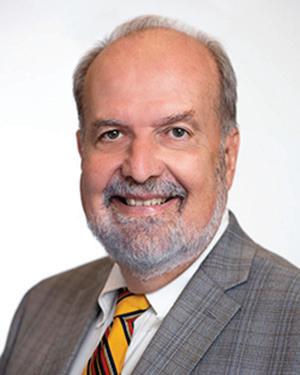
“What if God Were One of Us (According to Mercersburg)?”
Dr. Lee C. Barrett, Lancaster Theological Seminary
Learn more and register at https://pccucc.org/mercersburg-society/
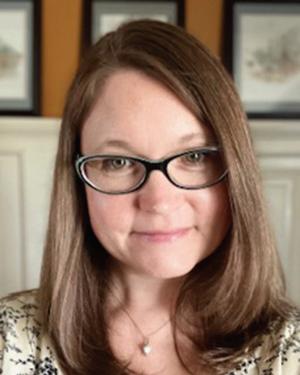
“I Am the Way, the Truth, and the Life: Exploring the Question of the Incarnation in the Classroom Through the Theme of Love”
Tekoa Robinson, Villanova University
The Roth Prize is o ered by the Mercersburg Society for the best student paper on Mercersburg theology submitted during this academic year. Papers pertaining to any aspect of this tradition, historical or contemporary, are eligible for the prize. The Mercersburg theology, associated with nineteenth-century theologians John Nevin and Philip Scha , takes the Incarnation as its theological starting point, with special interest in the church, the sacraments, and liturgical worship.
Submit your paper on any aspect of Mercersburg theology for the $750 Roth Prize. Questions and submissions to Dr. Anne Thayer (thayera@moravian.edu) by May 16, 2025.




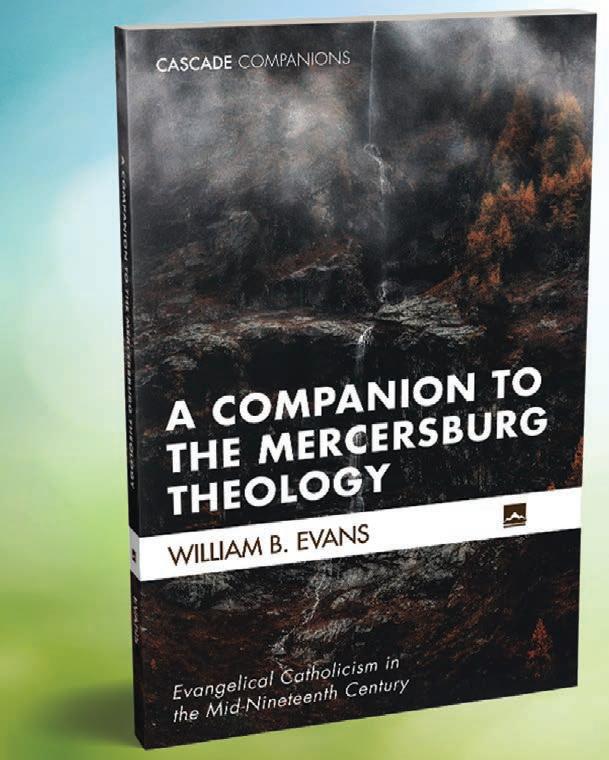
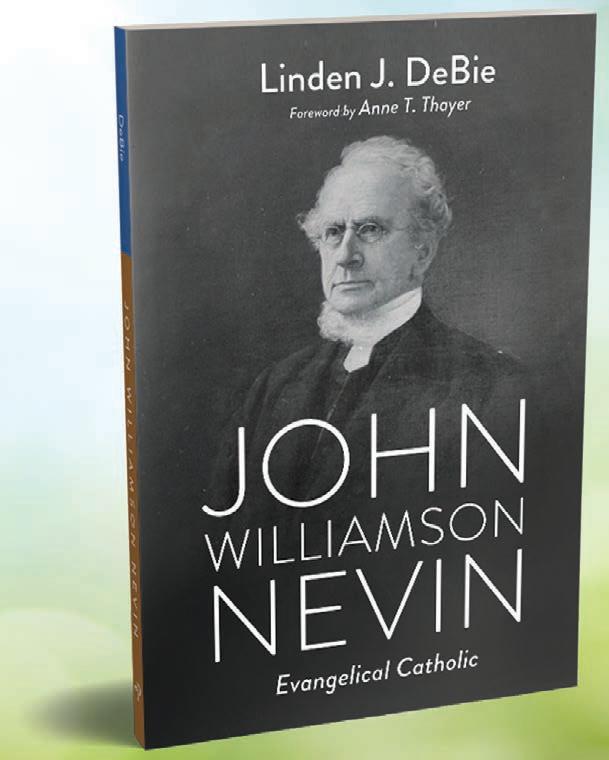


The Mystical Presence
And e Doctrine of the Reformed Church on the Lord’s Supper
978-1-61097-169-0 / $47 / 384 pp. / paper
Coena Mystica
Debating Reformed Eucharistic eology
978-1-62032-767-8 / $32 / 246 pp. / paper
The Incarnate Word
Selected Writings on Christology
978-1-62564-522-7 / $37 / 288 pp. / paper
The Development of the Church
“ e Principle of Protestantism” and other Historical Writings of Philip Schaff
978-1-62564-523-4 / $52 / 424 pp. / paper
Born of Water and the Spirit Essays on the Sacraments and Christian Formation
978-1-4982-3548-8 / $37 / 280 pp. / paper
One, Holy, Catholic, and Apostolic, Tome 1
John Nevin’s Writings on Ecclesiology (1844–1849)
978-1-5326-1897-0 / $38 / 298 pp. / paper
One, Holy, Catholic, and Apostolic, Tome 2
John Nevin’s Writings on Ecclesiology (1851–1858)
978-1-5326-1962-5 / $28 / 196 pp. / paper


The Early Creeds
e Mercersburg eologians Appropriate the Creedal Heritage
978-1-5326-9791-3 / $38 / 296 pp. / paper
The Heidelberg Catechism
e Mercersburg Understanding of the German Reformed Tradition
978-1-5326-9819-4 / $42 / 332 pp. / paper
Retrieving Catholicity in American Protestantism Essays in Church History 978-1-5326-9928-3 / $45 / 366 pp. / paper
Christocentric Reformed Theology in Nineteenth-Century America Key Writings of Emanuel V. Gerhart
978-1-7252-5086-4 / $59 / 480 pp. / paper
Philosophy and the Contemporary World Mercersburg, Culture, and the Church
978-1-6667-6271-6 / $49 / 422 pp. / paper
The Mercersburg Theology and the Quest for Reformed Catholicity 978-1-60608-241-6 / $29 / 214 pp. / paper
The Mercersburg Theology 978-1-55635-316-1 / $49 / 392 pp. / paper
Worship and Reformed Theology e Liturgical Lessons of Mercersburg 978-0-915138-12-8 / $61 / 498 pp. / paper
The Anxious Bench, Antichrist and the Sermon Catholic Unity 978-1-57910-429-0 / $23 / 177 pp. / paper
Romanticism in American Theology Nevin and Schaff at Mercersburg 978-1-55635-123-5 / $38 / 340 pp. / paper
The Reformed Pastor Lectures on Pastoral eology by John Williamson Nevin 978-1-59752-383-7 / $22 / 120 pp. / paper
Speculative Theology and Common-Sense Religion Mercersburg and the Conservative Roots of American Religion 978-1-55635-476-2 / $22 / 130 pp. / paper







Have you ever had an issue on the Christian organizations in the universities? There are many people who have come to Christ through them. I became a Christian through InterVarsity Fellowship and met my husband there. Campus Crusade, Navigators, Neuman Club, parachurch groups, etc. That’s when people are being formed.
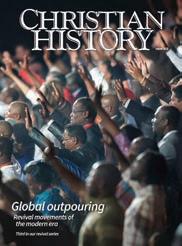
—Gloria Orozco, Florence, TX

Thank you for the suggestion, Gloria. We’ve touched often on various parachurch organizations throughout past issues of CH , and in 2021 our issue #139 was devoted to the history of Christian higher education, but we have never done an issue specifically on Christian organizations in higher education. We will add it to our list of topics!
This is an incredible issue portraying one of the faith’s greatest contemporary teachers and preachers, Oswald Chambers. It is a must read.—Randy Hatcher, Augusta, GA
I thoroughly enjoyed your issue on Oswald Chambers and was most struck with Biddy. She clearly was certain the work had been assigned ‘to her brush’ and did it faithfully for her whole life. I would not have been inspired by her without your issue. Thank you.—Judith Oulund, Brookline MA
You have no idea how much Issue 153 on modern revivals and movements meant to me. I weep for the spiritual coma our western culture is in, but as I read this issue I wept for joy at how God’s Holy Spirit has and does move to transform lives and cultures. Certainly I never doubted that God works constantly to build His Kingdom; I knew about the larger movements such as Asuza and revival in Indonesia, and occasionally would hear of others, but was absolutely blown away by the number, size, and fervor of so many around the world in this century. I pray for God-breathed revival often, especially in the generations born since 2000. I know God honors prayer that honors Him, and it was thrilling to my soul to read how He answers those prayers. Thank you, thank you.—Theodore Heil, Loveland, CO
I know I sound like a broken record, but I have read every copy over the last 43 years and after the Bible, it has profoundly affected my life as a Christian and a pastor and an evangelist preaching on revival throughout New England. I’m grateful for the staff and for this tremendous magazine. I share this magazine with everyone in our pastoral meet-
ings throughout New England. Keep up the tremendous work. Renzo Ventrice, Holyoke, MA
I thoroughly enjoy your magazine. Through the years it has opened new vistas, inspired me to think and act, informed me of material and ideas to pursue, it has changed me. The research, the unique categories, and variety remind me of a newspaper, trying to keep me updated about outdated things!—Richard Fisher, Byron GA
In a video update in March of this year, CHI president Bill Curtis announced the end of an era: our animated Christian history series for children, Torchlighters: Heroes of the Faith, has drawn to a close after 20 years. (You can watch the announcement on Vision Video’s YouTube.)
After the video went live, fans shared their sadness, memories, and gratitude. Here are a few of their kind words:
Thank you so much, as a mom and a Sunday school teacher I have appreciated these wonderful faith-filled videos very much. I love how biblical they are, how they portray personal sacrifice. The videos are an amazing gift to the body of Christ. It’s been a personal highlight for me to also get to know some of the heroes that were new to me. And definitely a new perspective on many heroes that were known to me. I love how genuine the characters in the films have been portrayed, and also with humor. A great antidote to the superficiality in the Christian entertainment that usually doesn’t honor personal sacrifice and is more self-centered than Christ-centered. Again, I just want to thank you. And also for explaining the end of the era and by posting this video also giving us the opportunity to express our thanks for all the effort that has gone in these videos for the last 20 years. I have bought every one of them here in the Netherlands.—@mnvd2508
Torchlighters are the only “cartoons” that make me cry. My children love them, and every time we watch them, I am strengthened to be even more dedicated for Christ. Thank you for all your hard work. The Lord knows all the lives that have and will be impacted.—@elisaw4623
I absolutely love the Torchlighters, I am glad I found it when I did. The testimonies give me strength and remind me why I serve God! God bless you so much, I will be sad to see it go—I hope someone will continue it one day!—@LtrishaMartina
Thank you for all your effort It is truly sad to see the series end here. All the episodes were deeply moving and touching, drawing us closer to understand His love and increasing our respect for missionaries. If there is a way, please continue the series. God bless.—@ramyasubramaniam751
If you’re at all familiar with Lancaster, Pennsylvania, probably the first thing that comes to your mind is its wellknown Amish community, and the bucolic imagery their lifestyle conjures: miles of rolling farmland, horse-drawn buggies on country lanes, cows and sheep and chickens freeranging in grassy fields. And you’d be right—at least about surrounding Lancaster County.
Lancaster itself, however, is a real city, one as historic as neighboring Philadelphia, and with the same fingerprints of colonial and revolutionary America all over it. During a recent visit, I went in search of some of that American history in Woodward Hill Cemetery.
On a blustery spring day, dragging my elementary school-aged children along after a two-mile trek, we entered the grounds most famous for housing the grave of the country’s fifteenth president, James Buchanan.
We’d get to Buchanan, I told them. First I was on the hunt for another grave, which was a bit less famous and a little more difficult to find. We kept our eyes peeled as we stalked the grounds. I only caught it thanks to a passing glimpse of the Chi-Rho symbol I knew should be there, but there it was: the final resting place of John Williamson Nevin. Who?
Again those familiar with Lancaster probably don’t think “John Williamson Nevin.” Before editing this issue, I knew nothing about him. But the life and work of Nevin—a minister in the German Reformed Church, a scholar and theologian, and the architect of a nineteenth-century Christian philosophy known as the Mercersburg movement—have a greater bearing on American Christian history than you might realize.
In this issue you’ll meet Nevin and his fellow theologian, Philip Schaff, a scholar, historian, and minister in the German Reformed Church. Working first from a seminary located in Mercersburg, Pennsylvania, and later from college and seminary campuses in Lancaster, the Mercersburg thinkers challenged the zeitgeist of American Christianity in the nineteenth century by swimming against the tide of revivalism and its iconic practices. They also developed, wrote about, and shared a particular vision for the church they encountered in the United States.



Before ecumenism even existed as a concept, Nevin and Schaff imagined an impossible future: one in which Catholicism and Protestantism could find common ground, recover the good, and slough off the aberrant in both traditions. Such a position invited heated controversy and charges of heresy.
They desired to see a gathered worship that recovered ancient practices and a Christianity that centered the presence of Christ, namely, in its understanding of the Incarnation and the Lord’s Supper. Again controversy ensued as some saw their views as far too Catholic. But along with their students, the two thinkers defended their hopeful vision of a recovered and united Christendom for the rest of their lives, facing off against various factions—Charles Hodge and the luminaries of Princeton Seminary, Charles Finney and his fellow revivalists, and finally, influential leaders of the German Reformed Church.
What came of these strivings might not be readily apparent, as America’s civil war eclipsed the movement’s discourse and influence. And yet as the twentieth century dawned, rife with greater evils outside the church than the conflicts within, the Mercersburg vision of Christian unity looked more appealing to believers both in the United States and around the world.
As I have had the opportunity to learn about the thinkers of this movement myself, I am surprised by the fingerprints I see in both my local Pennsylvania history and in theological thought throughout American Christianity. Like the unassuming but beautiful gravestone I found in Woodward Hill Cemetery (see p. 17), the ideas of Mercersburg are present but unnoticed.
Today as Christians seek to find their roots in the ancient church and interpret what that means for a common future, many are discovering the writings of Schaff, Nevin, and other Mercersburg thinkers for the first time. A Mercersburg revival might just be at hand CH
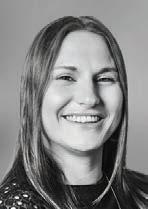
Kaylena Radcliff Managing editor
Find Christian History on Facebook as ChristianHistoryMagazine, or visit www.christian historymagazine.org. Read daily stories at www.christian historyinstitute.org/today. For X (formerly Twitter), use @christiaHistory, and for Instagram, @christianhistorymagazine.
Be sure to be signed up for our next issue, #156, on what happened to the apostles.
A special thank you to William B. Evans and the Mercersburg Society for their help with this issue. We also thank the many readers who support this ministry, making it possible for us to provide Christian History in print. Please visit www.ChristianHistoryMagazine.org to renew or begin a subscription to Christian History














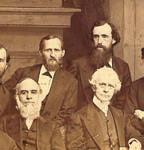
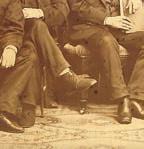
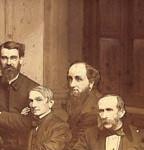
7 Punching up




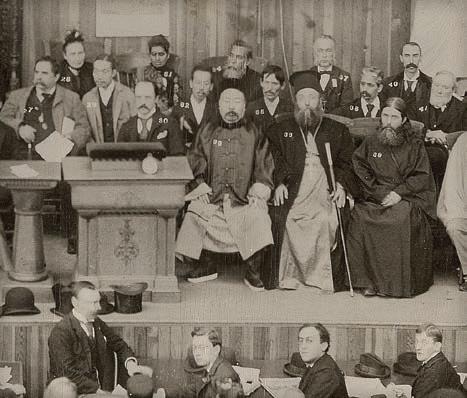
The Mercersburg movement challenged prevailing theological traditions
William B. Evans
13 “The new creation in Christ”
Excerpts from John W. Nevin
14 Mercersburg’s architect
The life and work of
John Williamson Nevin
Linden J. DeBie
18 “The power of a common life”
Nevin’s teaching on the Eucharist
19 “An undivided kingdom of God”
Mercerburg’s historian, Philip Schaff, fought for a united Christendom
Theodore Louis Trost
Founder
A. K. Curtis
Executive Editor
Bill Curtis
Senior Editors
Chris Armstrong
Jennifer Woodruff Tait
Managing Editor
Kaylena Radcliff
Advisory Editor, CH 155
William B. Evans
Contributing
Editor
Edwin Woodruff Tait
Design Editor
Doug Johnson
Proofreader
Meg Moss
Image Researcher
Max Pointner
Editorial Coordinator
Melody Belk
23 Uniting law and gospel









The church’s destiny according to Philip Schaff
26 Pursuit of “the common and the constant”
Mercersburg’s clash with revivalism
William B. Evans
30 Revival, rightly understood?

Nevin on “New Measures” revivalism in The Anxious Bench
in
31 Mercersburg’s “worship war”
Crafting a new liturgy for the German Reformed Church
Walter L. Taylor
34 Mystic, sweet Communion
Excerpts from the liturgy for Holy Communion
Editorial Assistant
Grace Bert
Circulation
Sara Campbell
Karen Kopp
Print Coordinator
Deb Landis
Publisher Christian History Institute



35 Centering Jesus

Annette G. Aubert
38 Foils, foes, and friends


David W. Layman
A theological roundtable





Emanuel Vogel Gerhart, a student of Mercersburg, became one of its key advancers
Key figures related to the Mercersburg movement
42 Perspectives on Mercersburg
John H. Armstrong, William B. Evans, Jennifer Woodruff Tait
Also: • How to speak “Mercersburg,” inside front cover
• Letters, p. 4
• Editor’s note, p. 5
• Timeline, p. 24
• Recommended resources, p. 46
• Reflection questions, p. 48
©2025 Christian History Institute. Cover: Nevin Chapel, c. 1920. Lancaster, Pennsylvania— Courtesy of Archives and Special Collections, Franklin and Marshall College, Lancaster, Pennsylvania.
Christian History is published by Christian History Institute, P. O. Box 540, Worcester, PA, 19490 and is indexed in Christian Periodical Index, ISSN 0891-9666. Subscriptions are available on a donation basis. Letters to the editor may be sent to editor@ChristianHistoryInstitute.org and permissions requests to info@ChristianHistoryInstitute.org. Credits: We make every effort to obtain proper permission to reproduce images. If you have information about an image source that is not credited, please let us know. www.ChristianHistoryMagazine.org • 1-800-468-0458
William B. Evans
In a tiny town in south-central Pennsylvania, some 40 miles west of Gettysburg, several professors in a small theological seminary worked tirelessly in the 1840s. This seminary at Mercersburg, affiliated with the small and somewhat marginalized immigrant German Reformed Church, was far from the urban intellectual centers of the day. Nor did it have access to the financial and intellectual resources afforded to larger and better-connected schools, such as Princeton Seminary. Nevertheless it quickly earned the attention of the theological world.
Truth be told, John Williamson Nevin (1803–1886) and Philip Schaff (1819–1893) were swimming against the stream of nineteenth-century American Protestantism with its individualism, revivalism, and pragmatism. As they interacted with leading theologians of the nineteenth century, both in America and abroad, it became clear that Nevin and Schaff had no problem “punching above their weight” and were quite willing to challenge prevailing theological ideas.
In their own Reformed circles—that is, a theological tradition coming from the Protestant Reformation and often associated with John Calvin—they debated the New England Congregational Calvinists as well as the Princeton Presbyterians over their tradition’s nature and shape. They suggested a substantial alternative to New England’s evangelical moralism, as well as to Princeton’s scholasticism that foregrounded the doctrines of predestination and forensic justification. They also pointed to issues and themes ignored in the larger American church—the centrality of the Incarnation, the importance of the church as the people of God and the sphere of salvation, the sacraments as objectively real means of grace, and the importance of liturgical worship that proclaimed and mediated these objective realities to the faithful.

NEVIN THE SCHOLAR John Williamson Nevin, luminary of Mercersburg, taught at several institutions in Pennsylvania. Here he poses (at center) with the faculty of Franklin and Marshall College, where he later lectured.
The meeting of Schaff and Nevin was like the concurrence of two heavenly bodies of the first magnitude. The splendor which ensued is known as the Mercersburg Theology, for these two intellectual giants of the Presbyterian-Reformed household of faith wrought out a theological system of singular boldness, relevant to its time, distinctively ecumenical, and of unquestioned enduring worth.






But as the Civil War erupted and American religion experienced dramatic shifts and changes in the postwar period, the Mercersburg movement and the theology it generated began to fade from view. Nevertheless the twentieth and early twenty-first centuries have seen a marked revival of interest in the theology of Nevin, Schaff, and their students, interest due not only to the formidable intellects of the two main protagonists—Nevin and Schaff—but also to the power and relevance of the theology they formulated. In 1955 historian Scott Francis Brenner wrote these effusive words:
Perhaps the Mercersburg theologians have something substantial and relevant to say to us today.
Founded in 1825 the German Reformed Seminary was located initially in Carlisle, Pennsylvania, and housed in the facilities of Dickinson College. It moved to the nearby city of York in 1829, and then to the town of Mercersburg in 1837. (The seminary moved to its current location in Lancaster, Pennsylvania, in 1871.) Money was tight, and at

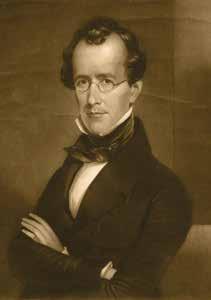

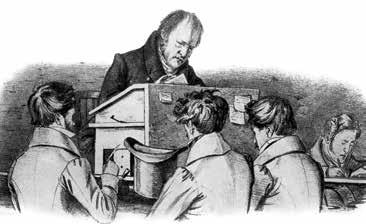
HOLD The philosophical
first a single theology professor, Lewis Mayer (1783–1849), taught the classes. Friedrich Augustus Rauch (1806–1841) arrived from Germany in 1832 and taught biblical literature and church history at the seminary. He was instrumental in introducing the idealism of the German philosopher Georg Wilhelm Friedrich Hegel to America. Hegel and other German thinkers, such as philosopher Friedrich Schelling and theologian Friedrich Schleiermacher, were seminal influences on the Mercersburg theology (see “How to speak ‘Mercersburg,’” inside front cover). These German modes of thought, alien to most Americans at that time, contrasted starkly with the empiricist philosophy of Scottish common sense realism that reigned in nineteenth-century America and shaped much of the theology of the period.
Rauch died suddenly in 1841 at the young age of 34, but by then, John Williamson Nevin had joined him at the seminary (see pp. 14–17). A native of southeastern Pennsylvania and a graduate of Princeton Theological Seminary,
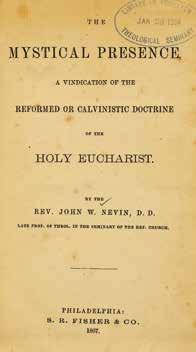
FAST FRIENDS When Philip Schaff (above middle) met John Nevin (above left) at Mercersburg, they bonded quickly over shared theological convictions. Mercersburg theology developed from their partnership, and works such as Nevin’s The Mystical Presence (above right) created both controversy and momentum for the movement.
Nevin had taught biblical literature at the Presbyterian Western Theological Seminary for 10 years before being recruited by representatives of the German Reformed Synod to teach theology at Mercersburg in 1840. Already familiar with German theological scholarship upon his arrival at Mercersburg, Nevin would become, more than anyone else, the catalyst and theologian of the Mercersburg theology movement.
In 1844 Philip Schaff joined Nevin at Mercersburg. Synod representatives recruited him from Germany to teach biblical literature and church history at the seminary (see pp. 19–22). Despite their differing backgrounds—Nevin, the Scots-Irish Presbyterian, and Schaff, the product of both Continental German Reformed and Lutheran influences—the two men quickly found that they shared a remarkably similar theological perspective on the issues of the day. Both were steeped in the Christocentric theology of the German mediating theologians and in German idealism, which informed their understanding of the church and church history.
They believed that history is the dialectical unfolding of ideal principles, and that the strife, struggle, and contradictions evident in the church’s history, from its ancient origins through the modern period, would be resolved in a more perfect expression in the church of the future. Therefore, both Schaff and Nevin insisted upon the theological importance of the church’s ultimate unity throughout history—a conviction that informed the budding ecumenism of the Mercersburg movement. For this reason the chaos of competing denominations and sects

RECOVERING CALVIN Nevin and Schaff argued for the real presence of Christ in Communion, feeling that it more accurately represented the view of Johh Calvin (above). Critics accused them of “Romanizing.”
they saw in nineteenth-century America deeply disturbed them.
Such ideas were strange to many, both inside and outside the German Reformed Church, and Nevin and Schaff soon found themselves involved in controversy. However, they did not shy away from debate, and Nevin in particular was a formidable polemicist. Nevin’s critique of Second Great Awakening revivalism, The Anxious Bench (first published in 1843 and again in a much expanded second edition in 1844) attacked Charles Finney’s revivalist methods and the conversionist theology that undergirded them (see p. 30).
Schaff’s inaugural lecture, published as The Principle of Protestantism, argued against the apostasy theory, or the then-popular notion that the true church devolved into catholic darkness after the death of the apostles only to be rediscovered, wonderfully, by Martin Luther in the sixteenth century. He proposed a higher appraisal of Roman Catholicism, going so far as to argue that the church of the future must bring together the best qualities of Rome and Protestantism. Not surprisingly he was almost immediately condemned by some in the German Reformed Church as a “Romanizer.”
Nevin’s The Mystical Presence was published in 1846 and argued on biblical, theological, and historical grounds for a recovery of John Calvin’s doctrine of the real presence of Christ in the Lord’s Supper (see p. 18). Such Eucharistic ideas, however, stood in considerable tension with Zwinglian memorialism—a view that Christ’s presence in Communion was a mere remembrance, or a memorial, as
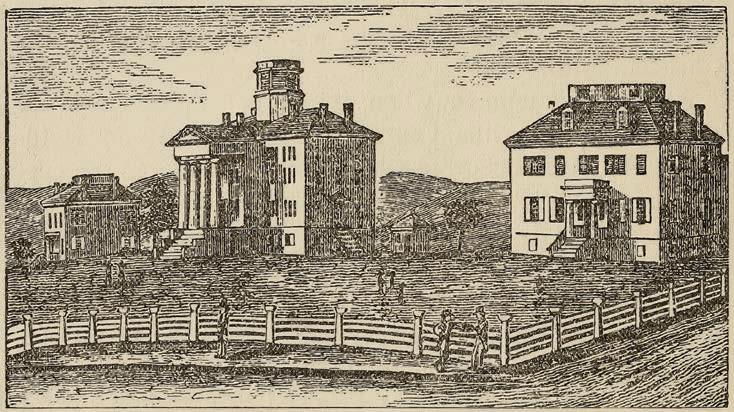
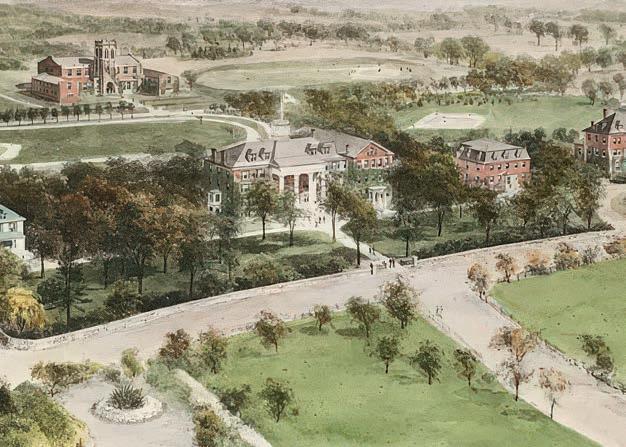
LEGACY OF LEARNING The Mercersburg location of the seminary also housed Marshall College in 1843 (top). Later the campus became Mercersburg Academy, a college prepatory school (1907 campus above).
opposed to a real presence of Christ’s incarnate humanity—which prevailed in much of American Protestantism. Again the charges of Romanizing came from Mercersburg’s opponents both inside and outside the German Reformed Church. A clash of titans ensued in Nevin’s memorable debate (1846–1850) with Charles Hodge (1797–1878) of Princeton on this topic. Many historians believe that Nevin won by a considerable margin.
In 1849 the Mercersburg Review was founded as a venue for Nevin’s and Schaff’s literary efforts. Nevin wrote prolifically, producing almost 50 articles in the first four years of publication. His evolving theological interests were evident in these first four volumes of the Review. Early on his work focused especially on the importance of the Apostles’ Creed and on the dangers of sectarian Protestantism. Then his attention shifted to Christology and to the history of the early church as Nevin pondered the discontinuity of the Protestantism of his day with early Christianity and considered becoming Roman Catholic. The dramatic break in












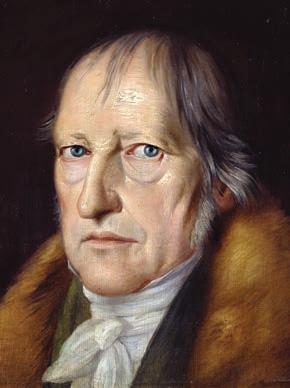


Nevin’s literary activity after the 1852 volume of the Mercersburg Review reflected his personal struggles.
Physically worn out by his herculean literary efforts and his teaching and administrative labors at the seminary and Marshall College, and haunted by the possibility that the Protestant experiment was irreparably flawed, he entered a period of emotional breakdown that became known as “Nevin’s Dizziness.” Nevin contributed occasionally to the Review from this point on, but students of Rauch, Nevin, and Schaff carried the Mercersburg perspective forward in the Review. Schaff’s contributions also grew, and his fruitful research into the history of the early church continued. By this point, however, the initial burst of Mercersburg’s theological creativity had subsided. But the task of systematizing the Mercersburg theology remained, undertaken most notably by Emanuel Gerhart (see pp. 35–37). Mercersburg thinkers also focused on generating liturgical resources for the German Reformed Church that reflected their insights and ethos.
Though the liturgical sensibilities of Mercersburg continued to influence many German Reformed congregations, the distinctive theological agenda of Mercersburg began to wane. Post–Civil War America, dealing with rapid urbanization and massive immigration, looked much different from the antebellum period. In Germany a neo-Kantian theology displaced Schleiermacher and Hegel. Soon this classical Protestant liberalism, which was naturalistic and moralistic, arrived in the United States and helped generate the social gospel movement. In comparison the Mercersburg theology—with its focus on the Incarnation and the Resurrection and its ecclesial regard for the church as a supernatural organism—seemed dated. Evidence of this eclipse even within the German Reformed Church is found in a 1912 article by Lancaster Theological Seminary church historian George Warren Richards (1869–1955), who wrote that

The Mercersburg movement owed much to G. W. F. Hegel (aboveleft) and idealism, as well as the theology of Friedrich Schleiermacher (middle). Schleiermacher in particular had roots in German Romanticism and its emphasis on feeling, nature, and symbolism, which this Romantic painting (above) captures.
“the formulas of the Mercersburg school are no longer pertinent and adequate” and that “the Mercersburg system has ‘had its day and ceased to be.’” The continuing significance of the movement, he suggested, lay in how Nevin and Schaff “paved the way for a transition from Puritanism to Modernism.”
After the First World War, the dialectical theology of Karl Barth (1886–1968) and others emerged. Whereas Mercersburg had embraced historical consciousness and scholarship, Barth sought to flee from the acids of historical criticism by locating the historical foundation of Christianity in the realm of “suprahistory,” where it could not be proven or disproven by historical inquiry. Doubtless Mercersburg’s regard for Schleiermacher, whom Barth criticized, was an embarrassment as well. Finally Mercersburg’s high ecclesiology and view of the church as the sphere of salvation did not mesh well with Barth’s low-church, Zwinglian sensibilities.
“SPARK OF PROPHECY”
But even during the heyday of the dialectical theology, the stage was being set for revived interest in Mercersburg. By the early twentieth century, the ecumenical movement

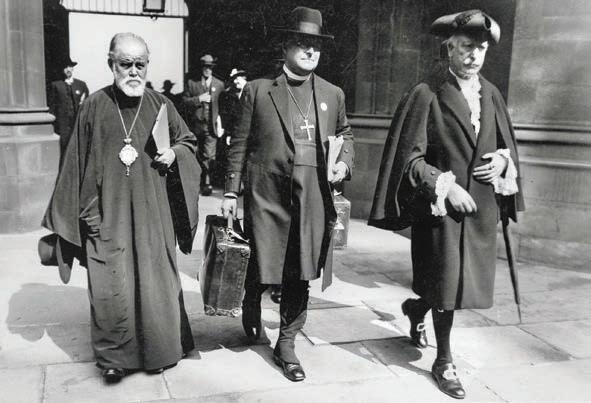
THE END OF MERCERSBURG? Karl Barth (above) never engaged the Mercersburg theology, but like Nevin and Schaff, he placed Christ at the center. Many of his views differed from Mercersburg; the movement was lost in Barth’s and other modern thinkers’ shadows. And yet 20th-c. ecumenical movements (aboveright) proved the prescience of Mercersburg’s hopeful vision of the church.
REVIEW REVIVAL Interest in the writings of Schaff and Nevin led to reprintings and new collections, often salvaged from old pages of The Mercersburg Review (right).
was spreading in the United States and in Europe. The great 1937 ecumenical meetings at Oxford and Edinburgh expressed sentiments regarding church unity similar to the conclusions of Nevin and Schaff. Church historian George Warren Richards, who ironically had dismissed the significance of Mercersburg theology four decades earlier, noted now: “Schaff and Nevin were far-sighted men who had at least a spark of prophecy in their theology.”
Around the same time, a liturgical renewal movement within Roman Catholicism was spilling over into Protestant denominations, sparking interest across denominational lines in the recovery of ancient church practices. Just as Nevin and Schaff had done a century earlier, liturgical-renewal scholars drew heavily on the worship traditions of the early church.
Soon articles and books appeared, praising Nevin and Schaff as theologians of enduring significance and suggesting that the Mercersburg thinkers had something to offer the contemporary church after all. Particularly significant were lectures presented at Austin Presbyterian Theological Seminary in 1960 by University of Chicago’s church historian James Hastings Nichols (1915–1991). These lectures were published in 1961 as Romanticism in American Theology: Nevin and Schaff at Mercersburg. Nichols’s volume provided the first extended scholarly analysis of the Mercersburg theology. He said that Nevin and Schaff were “major prophets
of the twentieth-century ecumenical movement,” adding that “they ranked easily among the first half dozen American theologians of their generation.”
But many of the Mercersburg writings were long out of print or found only in the musty pages of the Mercersburg Review. Text accessibility was a real problem, and so in the mid-1960s the reprinting of significant Mercersburg writings began. Schaff’s The Principle of Protestantism and a collection of Nevin’s The Mystical Presence and Other Writings on the Eucharist appeared in the never-completed Lancaster Series on the Mercersburg theology in 1964 and 1966 respectively.
Anthologies that collected key Mercersburg texts on important doctrines—the church, Christology, the sacraments, ministry, and human freedom—as well as Nevin’s and Schaff’s significant writings, were published and began circulating in the 1960s and 1970s. The task of republishing Mercersburg texts continues today in the Mercersburg Theology Study Series.


While initially concerned with problems facing the German Reformed Church in America and the character of the Reformed tradition, the Mercersburg theology also spoke to issues relevant to American evangelicalism and to mainline Protestants. Both Nevin and Schaff, though recognizing the Christian’s vital experience of salvation, harshly critiqued the revivalist excesses, rampant subjectivity, low sacramentology, historical amnesia, and lack of liturgical sensibility that they thought characterized American Protestant evangelicalism. More than a few evangelicals have found these











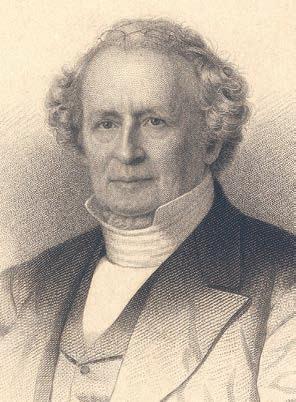

HODGE VS. NEVIN Charles Hodge objected strongly to Nevin’s view on the Lord’s Supper and publicly critiqued it.
traits that Nevin and Schaff considered so troubling present in the church today and have turned to Mercersburg for an antidote.
Thus, the contemporary revival of interest in the Mercersburg theology has brought together a remarkably broad spectrum of Christians—from members of liberal mainline denominations interested in ecumenism and liturgical renewal to evangelicals seeking a deeper and more historically informed experience of the Christian faith. Reflecting on the formation of a society devoted to the discussion and preservation of Mercersburg distinctives, liturgical scholar Howard Hageman (1921–1992) wrote in 1985:
Charles Hodge of Princeton negatively reviewed John W. Nevin’s 1846 treatise on the Lord’s Supper, The Mystical Presence, at length in 1848, and Nevin quickly responded at even greater length. At issue was not only what is received in the Lord’s Supper, but the witness of the Reformed theological tradition.
It is, of course, admitted that a particular doctrine’s dying out of the faith of a church is, of itself, no sufficient evidence that it was not a genuine part of its original belief. This is too obvious to need remark. There is, however, a great difference between a doctrine’s being lost by a process of decay and by the process of growth. It is very possible that a particular opinion may be engrafted into a system, without having any logical or vital union with it, and is the more certain to be ejected, the more vigorous the growth and healthful the life of that system. The fundamental principles of Protestantism are the exclusive normal authority of Scripture, and justification by faith alone. If that system lives and grows it must throw off everything
The larger majority of those present were working pastors (and some laypeople) who are uneasy about the integrity of the Reformed tradition in today’s America. Repelled by the sterility of a fossilized Calvinism, appalled by the success of a mindless evangelicalism, and discouraged by the emptiness of classic liberalism, they are looking for a fresh understanding of the Reformed tradition. Mercersburg, with its emphasis on incarnation, church, sacraments, and ministry as essential elements of that tradition, seems to offer at least an interesting possibility.
Could it be that Mercersburg’s “evangelical catholicism” is as provocative and intriguing today as it was in the time of Nevin and Schaff? CH
William B. Evans is the Eunice Witherspoon Bell Younts and Willie Camp Younts Professor of Bible and Religion Emeritus at Erskine College. This article is adapted from A Companion to the Mercersburg Theology: Evangelical Catholicism in the Mid-Nineteenth Century.
incompatible with those principles. It is the fact of this peculiar view of a mysterious influence of the glorified body of Christ, having ceased to live, taken in connection with its obvious incompatibility with other articles of the Reformed faith, that we urge as a collateral argument against its being a genuine portion of that great system of doctrine. According to the most authoritative standards of the Reformed Church, we receive the body and blood of Christ, as a sacrifice, just as Abraham and David received them, who ate of the same spiritual meat and drank of the same spiritual drink. The church is one, its life is one, its food is one, from Adam to the last of the redeemed.— Charles Hodge, in The Biblical Repertory and Princeton Review 20, 1848
According to [Hodge], the only union with Christ which the Reformed doctrine allows, is one that holds under a purely mental form between him and our souls— through the intervention of the
Holy Spirit—exclusive altogether of his human life as such. Our relation to his body is at best remote and indirect. This is not in any way the bond and medium of our communication with his higher nature. When we are said to eat his flesh and drink his blood, the language must be taken as a violent catachresis; the meaning of which is simply that we have a very close spiritual conjunction with him by being made to experience in ourselves the influences of the same Holy Spirit that dwells also gloriously in his person. The idea of any participation, in the case of believers, in Christ’s human body, nature, or life, as such, is declared to be foreign entirely from the original faith of the Reformed Church The Reformed doctrine is wronged, however, in being made to rest in a theological mutilation here, which it never acknowledged in truth, but on the contrary took all pains to disown and disclaim.—John W. Nevin, The Mystical Presence and Other Writings on the Eucharist, 1966
“The
In these excerpts from the January 1850 Mercersburg Review, Nevin argues against the American Protestant tendency to downplay the Incarnation and discount the real spiritual union between Christ’s incarnate humanity and the Christian.
But why should we go on to multiply proofs in this way, for what no unsophisticated reader of the New Testament surely will pretend to deny? What can the New Testament be said to teach at all, if it does not teach the fact of the mystical union, the true and actual formation of Christ’s life into the souls of his people? Men may get rid of this teaching, if they choose, by willfully turning the whole of it into barren metaphor and figure. But it is with a very bad grace they then turn round and say: We go by the Bible. . . . The question of election, the question of the perseverance of the saints, and many other questions made to be of primary account in one orthodox system or another, are of far less clear representation in the Bible, than this view of the Christian salvation as involving “Christ in us the hope of glory.” Nor is it, by any means, of new acknowledgment in the Church, however strange and transcendental it may now sound to some “evangelical” ears. It runs through the universal theology of the old Christian Fathers. It forms the key-note to the deepest piety of the Middle Ages. It animates the faith of all the Reformers. Luther and Calvin both proclaim it, in terms that should put to shame the rationalism of later times, pretending to follow them and yet casting the mystery to the winds.
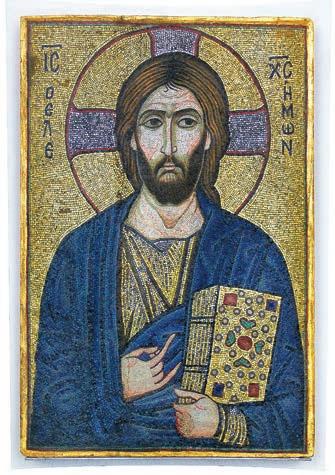
sense of all previous history came finally to its magnificent outlet. This outlet, however, when it did come, involved a great deal more than was comprehended in the actual constitution of the world, the living human world, as it stood before; for it was brought to pass by the real union of the everlasting Word with our fallen life.
The mystery of the Incarnation had been coming through 4,000 years; still the coming was not the presence of the fact itself; as little as the aurora which gilds the eastern heavens may be taken for the full orbed splendors of the risen sun. Christ is the sense of all previous history, the grand terminus towards which it was urged from the beginning. . . . He is the true basis thus of the period going before, as well as of the period that follows.
Two conceptions, in this way, enter jointly into the idea of the Incarnation as it challenges our faith throughout the New Testament. First, it is a fact which unites itself really with the living constitution, the actual concrete and organic history, of the world as it existed previously; it was no phantasm, no spectrum, no abstract symbol only played off to the eyes of men supernaturally for the space of 33 years. Secondly, however, it is in this form a new creation; not the continuation simply of the old, but the introduction into this of a higher life (the Word made flesh), which all its powers, as they stood previously, were inadequate to reach.

The Jewish dispensation had respect to the wants of the universal world, and was intended from the beginning to make room for the coming of Christ; which took place, accordingly, at last, when the “fullness of the time was come” (Gal. 4:4), “in the wisdom of God” (1 Cor. 1:21), and “according to the riches of his grace, wherein he hath abounded, toward us in all wisdom and prudence” (Eph. 1:7–10). The Incarnation, in this view, was no passing theophany [visible manifestation of God] or avatar. It was the form in which the
GOD
Mercersburg thinkers often dwelt on the Incarnation’s power and mystery. This icon displays Christ Pantocrator—the Almighty. He reigns as completely God and completely human.
Can there be any doubt, in regard to the scriptural authority of both these conceptions? They form the poles of the universal Christian consciousness as it starts in the Apostles’ Creed. They rule the whole process of theology in the Church, from the beginning, in opposition to Gnostic supernaturalism on the one hand and Ebionitic naturalism [denying the Virgin Birth and divinity of Christ] on the other. Both are presented to us from every page of the New Testament. Christianity, shorn of either, falls at once to the ground. To make Christ an intrinsic result simply, or an extrinsic accident only, for the old creation, is to go full in the face of the whole Bible. He must be all or nothing here; the deepest and most central fact of the world, or no fact at all; the alpha and omega of humanity, or no part of humanity whatever.







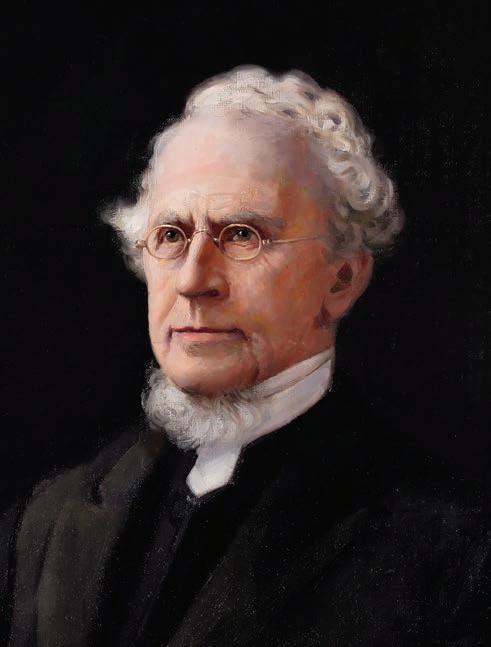
John Williamson Nevin (1803–1886) returned to his family farm in Herron’s Branch in 1821 near Shippensburg, Pennsylvania, broken and miserable. He had left his quiet farming community at just 14 years old—against his will, but in obedience to his father—to enter Union College in Schenectady, New York. He entered Union the youngest and smallest in his class, deeply shy and sickly. In fact Nevin’s “dyspepsia,” as it was diagnosed, was an early symptom of a lifelong anxiety about his health.
As if the stress of that was not enough, he was subjected to a coerced conversion experience that left him physically and emotionally scarred and in doubt of his faith. Young men at Union, most of whom had been raised and confirmed in the faith, were told they were hopeless sinners in need of conversion—a conversion expected to be visible and dramatic. The pressure was so great that most of them fell in with the practice. (Later, Nevin would write critically of these high-pressure conversion tactics, known as New Measures revivalism—especially as practiced by Charles Finney. See pp. 26–29.)
It was after this affair that the young Nevin came home, depressed, lacking direction, and with no hope for the
NERVOUS NEVIN Health anxieties plagued Nevin from a young age and contributed to a nervous breakdown. Despite this he mastered Hebrew and German, spearheaded the Mercersburg movement, and wrote prolifically throughout his life.
future. But once again his father prevailed over him, and so he agreed to study at Princeton Seminary.
Unlike Union, Princeton provided a genuine sanctuary from Nevin’s miserable physical and emotional state. During that period he had a life-changing experience. His roommate, Matthew Fuller, advised Nevin not to drop the Hebrew course as he intended. “God might have a purpose for it,” Fuller said. Not only did Nevin persevere, he excelled and became the best Hebrew scholar at Princeton, even better than his teacher, Charles Hodge. When Hodge left Princeton temporarily for further language study in Europe, Nevin took over his class in Hebrew. This encouraged him to pursue teaching as a career.
In 1830 Nevin became professor of biblical literature at the Presbyterian Western Theological Seminary near Pittsburgh, Pennsylvania. During his time there, he edited a small literary and morals weekly called The Friend (meaning friend of the American antislavery movement), and he immediately was branded an antislavery crusader. His journal brought angry denouncements from Pittsburgh’s wealthy slave owners, and a prominent physician described him as “the most dangerous man in Pittsburgh.”
At Western Seminary he was required to teach church history, prompting him to study the German scholarship on the subject. Soon he mastered the German language, and through his study, became captivated by the more orthodox mediating school of German teachers. The mediators wrote in reaction to the extreme rationalism of many prominent German scholars, seeking to mediate or navigate a safe course between modern science and Christian faith.
In 1840 he was called to lead the German Reformed Seminary in Mercersburg, where he met the headmaster of the denomination’s college, Frederick Augustus Rauch, recently emigrated from Germany. Rauch left a deep philosophical impression on Nevin and contributed to his change of thought from Scottish common sense realism and Puritan tendencies to his German idealism and high-church sympathy. Influenced by German sources including August Neander, Nevin began to emphasize Christology and with it the central doctrine of the

A THIRD WAY Through mediating theologians such as August Neander (above right), Nevin could navigate the faith and science divide.
REINING IN REVIVALISM Nevin reacted strongly to the dramatic, emotional appeals for conversion that camp meetings, such as the one pictured above, often utilized. He found relief from their excesses at Princeton Seminary (right).
Incarnation over the more common Reformed emphasis on the Atonement. At the same time, the Oxford Movement (a nineteenth-century Anglican retrieval of Catholic ideas) influenced Nevin’s high view of the church with emphasis on ceremony, vestments, and sacraments.



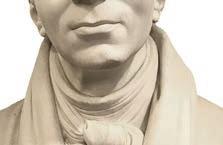
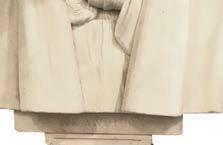





Soon after their meeting, Rauch died and Nevin took over leadership of both the seminary and the college. He was then joined by Swiss German scholar Philip Schaff, who would go on to become one of America’s preeminent church historians (see pp. 19–22). Immediately they were involved in one controversy after another, some minor but many as volatile as Nevin’s former stand against slavery. Nevin’s polemics included criticism of the hugely popular New Measures revivalism (see p. 30), as well as his insistence on the real spiritual presence of Christ in the Eucharist as taught by Calvin and published in Nevin’s masterpiece, The Mystical Presence (1846).
Nevin viewed the church as a divine institution given by Christ to the world for its salvation as he believed it was described in the Apostles’ Creed. This alleged “softness on Rome” led to the Classis of Philadelphia (a group of local churches within the German Reformed Church) to accuse both Nevin and Schaff of teaching doctrines foreign and
harmful. Clergy gathered at the synod of 1845 overwhelmingly exonerated the professors, and Mercersburg theology continued to be taught at the seminary.
The Mystical Presence, written in the aftermath of the synod debate, clarified remaining confusion over Nevin’s views, vindicated his and Schaff’s position, articulated both Calvin’s and the later Reformed Church’s historical theology of the Lord’s Supper, and promoted the cause of evangelical catholicism (see “How to speak ‘Mercersburg,’” inside front cover).
As Nevin’s most important work, it received international recognition and lifted Nevin to prominence as one of the foremost theologians in America. But it was also the book that finally turned Hodge and Princeton Seminary against Mercersburg (see p. 12). In collaboration with Schaff, Nevin would go on to produce controversial material on the early church where he commended a great











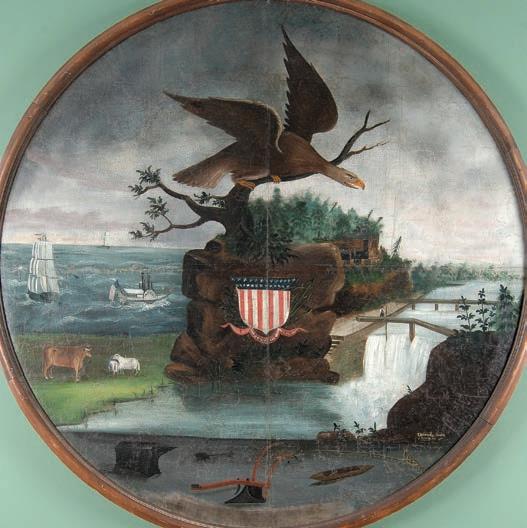
deal of Roman Catholic history and practice. Broadening his ecumenical interests, he sought to discover the “genius” of both the ancient church and the church of the Reformation. His research nearly led him to convert to Roman Catholicism, but in the end, he decided he could find fault with both systems, and he remained in the German Reformed Church.
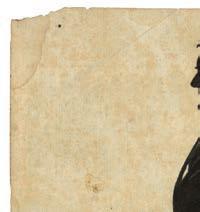

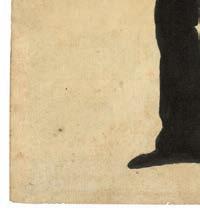


Nevin remained at Mercersburg Seminary, but in 1841 also became president of Marshall College (later Franklin and Marshall College). While juggling his responsibilities, he published the academic journal The Mercersburg Review to bring his views to a wider audience. The Mercersburg Review began publication in 1849 as a way of publicizing the scholarship of Nevin, Schaff, and their students.




During this period Nevin utilized Schaff’s idea (derived from philosopher Friedrich Schelling) of a “Church of St. John,” which would bring together the best of the earlier Catholic “Church of St. Peter” and the Protestant “Church of St. Paul.” This journal effectively disseminated and popularized the Mercersburg theology. While Nevin’s influence was expanding, the church question, the stress of controversy, the workload, and the precarious financial state of Marshall College all weighed heavily on him. From 1851 to 1852, he experienced what was likely a nervous breakdown, described at the time as “Nevin’s Dizziness.” Due to economic necessity, the college relocated to Lancaster, Pennsylvania, in the spring of 1853, while the seminary remained in Mercersburg. This resulted in Nevin’s first retirement, which lasted until 1861.
Having sufficiently recuperated on his farm, Nevin participated in a revision of the church’s liturgy. Naturally this
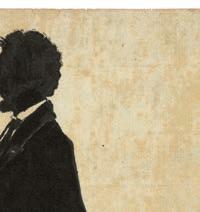



WHIGS AND WAR Before the Civil War, Nevin associated with the Whig Party (seal above left). He became a Republican when Abraham Lincoln above) became the party’s presidential candidate.

PASTORING THE PRESIDENT Former US president James Buchanan (left) often attended the chapel at Franklin and Marshall College, where he came under the spiritual care of John Nevin.
prayer book reflected his high-churchmanship, and its forms radiated his evangelical catholicism. In 1857 the liturgical committee published the provisional liturgy he had helped develop (see pp. 31–33). Once again controversy surrounded Nevin. He was directly responsible for the Ordination Rite that some believed made ordination a third sacrament, something Reformed believers would not abide. The published liturgy, which was likely the most high-church leaning liturgy ever produced in America by a Reformed church, was never widely used. But the amended prayer book had lasting appeal in the denomination.
In 1862 Confederate troops raided the quiet farms around Mercersburg, and fierce warfare forced the closing of the seminary in 1863. Schaff took a teaching position at Andover, and Nevin gave up most of his denominational obligations. The Civil War proved to be a watershed moment in the history of America, but it had an enormous personal impact on Nevin as well. An astute student of history and politics, he often preached jeremiads criticizing
LATTER DAYS IN LANCASTER John Nevin (near right) spent his later academic career in Lancaster, Pennsylvania, as a college lecturer and provisional president. He also wrote for the Review until he went blind. When he died in 1886, Nevin was buried in Lancaster at Woodward Hill Cemetery (far right), which is also the final resting place of President Buchanan.
much of the politics of the day and decrying what he called the “Party Spirit,” which he described as runaway pluralism. He also spoke of the Confederacy as a revolution against the legitimate government.
In practice Nevin was a Whig— one of the two main political parties at the time—however, with the rise of Abraham Lincoln (1809–1865), he joined the new Republican Party (an ancestor of the current party, though with many ideological differences). Though Nevin never met Lincoln, the two probably would have been easy friends. Both hated the Jacksonian Party (Democrats, also an ancestor of and ideologically different from the Democratic Party today), especially its support of slavery. And both retained their Whig sensibilities even after the party collapsed.
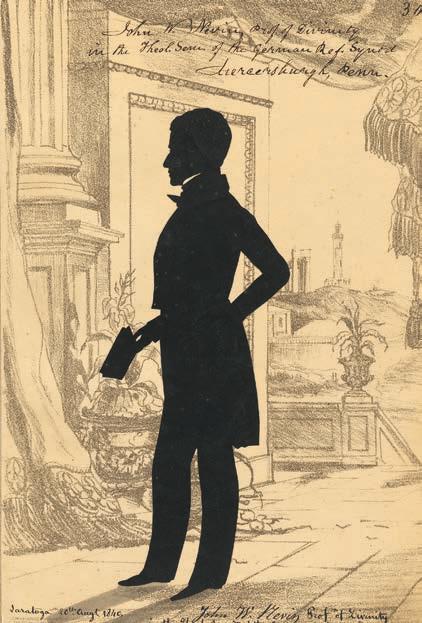
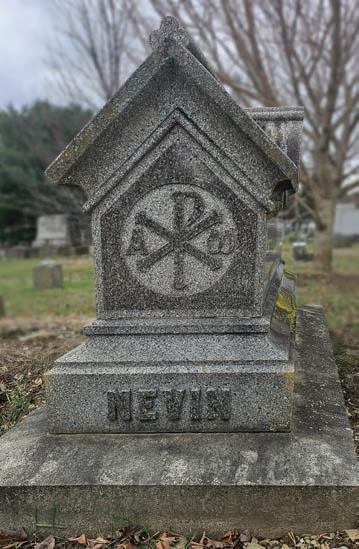
James Buchanan (1791–1868) was frequently in attendance, and Nevin became a spiritual mentor to him.
Buchanan lived close by at Wheatland, and so he gave serious consideration to joining the chapel that had become a church. In the end he decided to join the Presbyterian Church where he had made his profession of faith. When Buchanan died in 1868, Nevin gave the eulogy.






They both believed in divine providence and the Romantic notion of inevitable progress toward America’s destiny as a global leader. As for the all-important issue of slavery, Nevin and Lincoln followed the same trajectory. Initially they made preservation of the Union a priority, as did most Americans. However, once victory was at hand, Lincoln would settle for nothing less than the abolition of slavery throughout America. As for Nevin, it was well known how much he desired abolition. Personally and ideologically Nevin shared much with Lincoln, including a fondness for philosophy.
Nevin spent most of the war despondent. Denominational strife added to his desperation. It seemed to him society was collapsing into chaos, and he often thought the central government was inept and incapable of restoring order. He initially thought the South should go its own way. But when his sons, William and Robert, joined the Union Army, he stood firmly with Lincoln on both the Union and slavery questions.
From 1862 to 1866, Nevin lectured at Franklin and Marshall College primarily in the department of history, but he was in demand as a lecturer in a variety of fields. Three years later the chapel of Franklin and Marshall College was opened and Nevin became its pastor. Former president
At that time the college once again experienced financial difficulty, and Nevin was called upon to be its provisional president. The war had drastically depleted enrollment. For a short time, the college did well, but soon it was again steeped in financial trouble. Ultimately Nevin resigned in frustration in 1876.
Toward the end of his life, Nevin pursued what had always been an interest of his, mysticism, by way of the controversial Swedish mystic, Emanuel Swedenborg (1668–1772). In 1876 he wrote several articles for the Reformed Church Review having to do with “deep issues of spirituality.” They cannot be said to be mystical per se, but rather reflect Nevin’s interest in the subject in his declining years and the influence Swedenborg had on him. Although he continued to write for the Review from time to time, in 1883 his failing eyesight ended his brilliant contributions to American religious studies. Three years later, in 1886, John Williamson Nevin died, finally finding peace after a life of precarious health and bitter controversy CH
Linden J. DeBie is a philosopher, historian, and author of John Williamson Nevin: Evangelical Catholic and Speculative Theology and Common-Sense Religion. He edited Nevin’s The Mystical Presence and Nevin’s debate with Charles Hodge in Coena Mystica.
“The







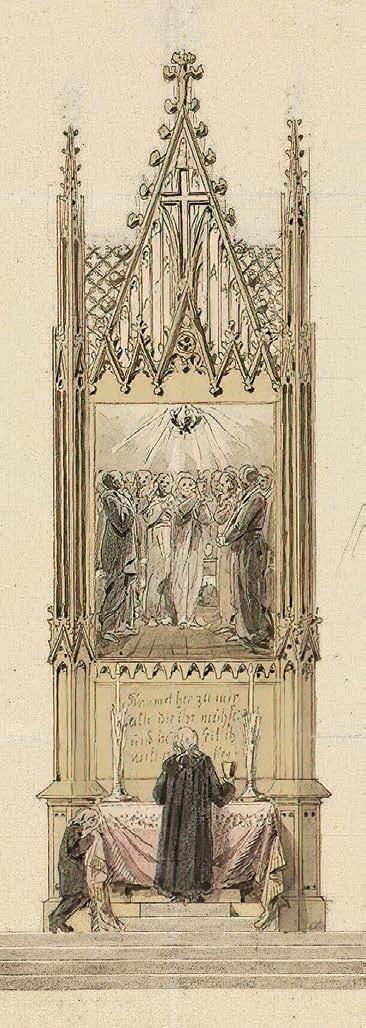
doctrine
The question of the Eucharist is one of the most important belonging to the history of religion. It may be regarded indeed as in some sense central to the whole Christian system. For Christianity is grounded in the living union of the believer with the person of Christ; and this great fact is emphatically concentrated in the mystery of the Lord’s Supper; which has always been clothed on this very account, to the consciousness of the Church, with a character of sanctity and solemnity, surpassing that of any other Christian institution.
The sacramental controversy of the sixteenth century then was no mere war of words . . . . It belonged to the inmost sanctuary of theology and was intertwined particularly with all the arteries of the Christian life.
This was felt by the spiritual heroes of the Reformation. They had no right to overlook the question which was here thrown in their way, or to treat it as a question of small importance, whose claims might safely be postponed in favor of other interests, that might appear to be brought into jeopardy by its agitation. That this should seem so easy to much of our modern Protestantism, serves only to show, what is shown also by many other facts, that much of our modern Protestantism has fallen away sadly from the theological earnestness and depth of the period to which we now refer
Any theory of the Eucharist will be found to accord closely with the view that is taken, at the same time of the nature of the union generally between Christ and his people. Whatever the life of the believer may be as a whole in this relation, it must determine the form of his communion with the Savior in the sacrament of the Supper, as the central representation of its significance and power. Thus the sacramental doctrine of the primitive Reformed Church stands inseparably connected
BEHOLDING THE MYSTERY (above) This watercolor by German Romantic Casper David Friedrich imagines a minister before the altar, gazing at a painting of the Last Supper, in which Jesus lifts the cup. The image invites worshipers into the sacrament.
with the idea of an inward living union between believers and Christ, in virtue of which they are incorporated into his very nature and made to subsist with him by the power of a common life.— Chapter 1
A strong presumption is furnished against the modern Puritan doctrine, as compared with the [sixteenthcentury] Calvinistic or Reformed, in the fact that the first may be said to be of yesterday only in the history of the Church, while the last, so far as the difference in question is concerned, has been the faith of nearly the whole Christian world from the beginning. It included indeed a protest against the errors with which the truth had been overlaid in the church of Rome. It rejected transubstantiation and the sacrifice of the mass; and refused to go with Luther in his dogma of a local presence. But in all this it formed no rupture with the original doctrine of the Church. . . .
The voice of antiquity is all on the side of the sixteenth century, in its high view of the sacrament. To the low view which has since come to prevail, it lends no support whatever.— Chapter 2
The union of the divine and human in [the Church’s] constitution, must be inward and real, a continuous revelation of God in the flesh, exalting this last continuously into the sphere of the Spirit. Let all this be properly apprehended and felt, and it cannot fail at once to exert a powerful influence over our judgment with regard to the Lord’s Supper. For it is plain, that this ordinance holds a central place in the general system of Christian worship.
The solemn circumstances under which it was originally instituted, the light in which it has always been regarded in the Church, and the very instinct, we may say, of our religious nature itself, which no rationalism can effectually suppress, all conspire to show, that it forms in truth the inmost sanctuary of religion, and the most direct and close approach we are ever called to make into the divine presence. The mystery of Christianity is here concentrated into a single visible transaction, by which it is made as it were transparent to the senses, and caused to pass before us in immediate living representation.
Low views of the sacrament betray invariably a low view of the mystery of the Incarnation itself, and a low view of the Church also, as that new and higher order of life, in which the power of this mystery continues to reveal itself through all ages .— Chapter 4
Theodore Louis Trost
Early in the year 1818, Anna Luisa Schindler abandoned her husband and escaped to the tiny Swiss village of Chur, located near the source of the Rhine River. There she met a local carpenter of limited means called Philipp Schaf. On the first day of the new year, she gave birth to their son, also named “Philipp Schaf.” But Schindler’s past haunted her new life. Soon after Philipp’s baptism on Epiphany Sunday in the local Reformed parish, authorities expelled her from the village for bearing the child out of wedlock and for breaching her prior marriage contract. Within a year the boy’s father died. The orphaned infant became a ward of the state. He only came to know his mother in later life; he never knew his father at all.
In his reminiscences Philip Schaff (who only permanently changed the spelling of his name in the 1840s) did not elaborate on the particulars of his humble origins. Indeed he may have been entirely unaware of some of these details. He did, however, credit his upbringing in poverty and obscurity as key to the development of his character, industry, and self-reliance.
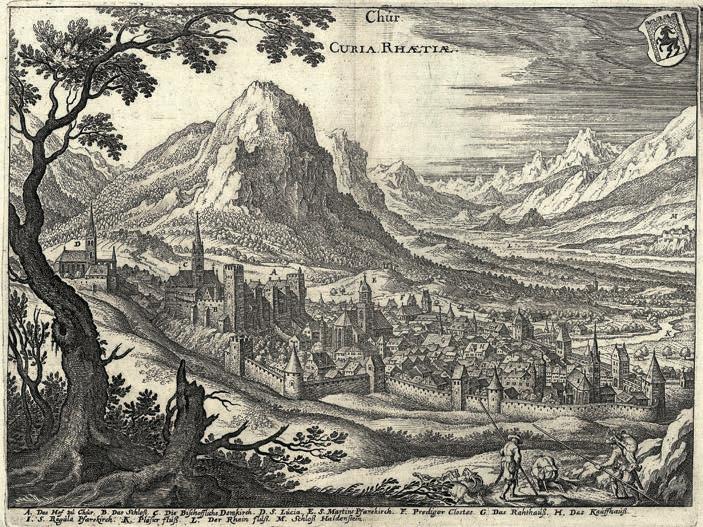
PROVINCIAL LIFE Philip Schaff grew up in idyllic Chur, one of the oldest towns in Switzerland, but his early memories of life here were probably painful.






Young Schaff’s intellectual abilities were recognized early on. A scholarship enabled the teenager to complete secondary school and enter the Kornthal Academy for boys in the Württemberg region of Germany. As an independent institution modeled after the schools associated with the Moravian Brethren, Kornthal advanced the values of rigorous academic training, personal piety, and a commitment to the general welfare (find more on the Moravians in CH #1). In this virtuous atmosphere, Schaff found himself one morning in a forest at prayer, crying in intense agony; suddenly he experienced a “new birth” and dedicated himself thenceforth to the “service of God.”
During his sixteenth year, Schaff was confirmed on Easter Sunday in the Lutheran church at Kornthal. His brief stay at the academy was followed by a much longer period of study at the Gymnasium (high school) in nearby Stuttgart. There Schaff lodged with the family of Johann Georg Mann, a prominent merchant whose son, William Julius Mann (1819–1892), became a lifelong friend.
Schaff began his theological studies at Tübingen University in 1837. Unusual for the time, the university included
both Protestant and Catholic faculties of theology. Schaff was particularly influenced by Isaak August Dorner (1809–1884), who taught that theologians must first possess the immediate certainty of faith, and then they could pursue the scientific explication of what faith believes. With his focus on the centrality of the human being’s union with God, Dorner concluded that God’s primary attribute, as exemplified in Christ, is love.
From Tübingen Schaff traveled to the University of Halle where he lived in the home of Professor Friedrich August Gottreu Tholuck (1799–1877). Schaff served as Tholuck’s personal secretary, and he dined regularly in the Tholuck home around a table that often included visiting colleagues from Berlin and elsewhere. Schaff then moved on to the University of Berlin to complete his theological studies. He worked closely with church historian Johann August Wilhelm Neander, whom he came to regard as his most significant mentor.
Neander, like Schaff, had endured hardship and poverty in his childhood. Born in Göttingen with the name David Mendell, he converted from Judaism to Christianity at the age of 17, inventing for himself the name “Neander,” that is “new man” (see pp. 38–41). Neander was intensely Christocentric and interpreted all theological themes in







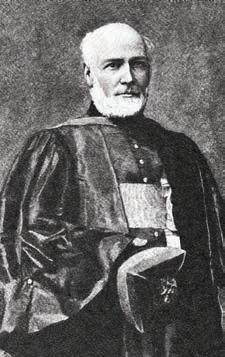
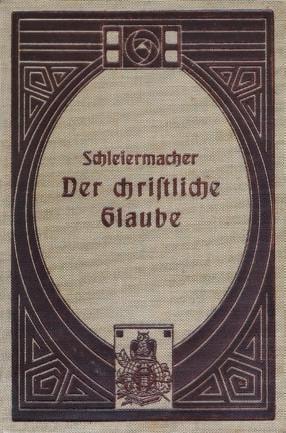
the light of the Incarnation and the believer’s living union with Christ. His theological convictions about the nature of the church and his approach to writing about the church inspired Schaff to pursue church history.
This august company of scholars all identified themselves in one way or another as proponents of the “mediating theology”—a movement that developed under the influence of both Schleiermacher and Hegel. Characteristic of Schleiermacher’s idea of mediation was that mediators arise from time to time who pronounce God’s will in a way that joins disparate viewpoints and factions into a new unity. One practical consequence of Schleiermacher’s position was his endorsement of the Evangelical United Church in Prussia: a union of Reformed and Lutheran churches throughout the Prussian Empire brought about in 1817 by King Frederick Wilhelm III.
Schleiermacher composed his famous volume of systematic theology, The Christian Faith (1822), with special reference to the union of the two Protestant churches. Hegel, meanwhile, espoused the theory that history advances in a dialectical pattern. History, from his point of view, moved by way of thesis and antithesis to a synthesis after competing or conflicting elements were cast off or discarded, resulting in a new beginning. These ideas were foundational for Schaff during his university studies, which concluded in 1841 when he received the degree of licentiate in theology from the University of Berlin.
Shortly thereafter Schaff embarked upon a 14-month sojourn through Switzerland and Italy as a tutor to a baron’s son. The party went to Rome, where 22-year-old Schaff preached the Palm Sunday sermon in the city’s Protestant chapel before Prussian princes. After Easter Schaff and his fellow travelers received an audience at the Vatican with Pope Gregory XVI (reigned 1831–1846). He recorded in his diary discomfort with kissing the pontiff’s red slippers. From Rome the party ventured to Turin, where they were hosted by the Waldensians, a religious community deemed heretical by the Catholic Church (read more about the Waldensians in CH #22).
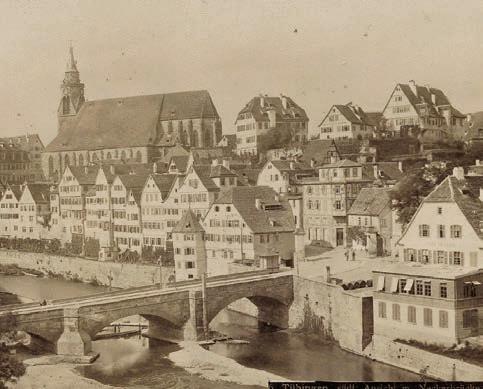
TÜBINGEN THINK TANK The seminary at Tübingen (above) formed many prominent German thinkers, including Schaff (aboveleft). Influenced by Schleiermacher’s mediating theology (his The Christian Faith is at middle), Schaff had a generous spirit and a pietistic tendency to look beyond confessional differences.
When Schaff returned to Berlin, he assumed the role of Privatdozent, or “independent lecturer,” at the university. His close associations in academic and ecclesiastical circles led to a meeting with two emissaries from the German Reformed Church in America and ultimately the unanimous election of Schaff to the chair of church history and biblical literature at the theological seminary at Mercersburg, Pennsylvania. The church synod extended a call to Schaff on October 19, 1843, signed by the synod’s president, Joseph Berg (1812–1871). But in less than a year, Berg would become Schaff’s chief antagonist in the German Reformed Church. On April 12, 1844, Schaff’s ordination service took place in Elberfeld, Germany, under the Pastor’s Aid Society, a missionary society that assisted immigrants to America. Thus Schaff, who had been baptized in the Swiss Reformed Church and confirmed in the Lutheran Church, was ordained by the Evangelical United Church. Schaff’s religious career reflected a process of growth central to his thinking about the very nature of church history itself. In his ordination sermon, Schaff preached on the words of the Macedonian as recorded in the book of Acts: “Come over and help us!” (Acts 16:9). His sermon concluded with an eschatological vision of a united Christendom gathered into one triumphant throng and the suggestion that it was toward the actualization of such a universal church—“an undivided kingdom of God”—that he would labor in America.
“CHURCH OF THE ANTICHRIST”
At a gathering of the German Reformed Church Synod in Reading, Pennsylvania, on October 25, 1844, Schaff delivered in German his inaugural address on the “Principle of Protestantism.” His topic was not intended to be controversial; rather, he offered his address as a summary of the basic approach to the discipline of church history that he had

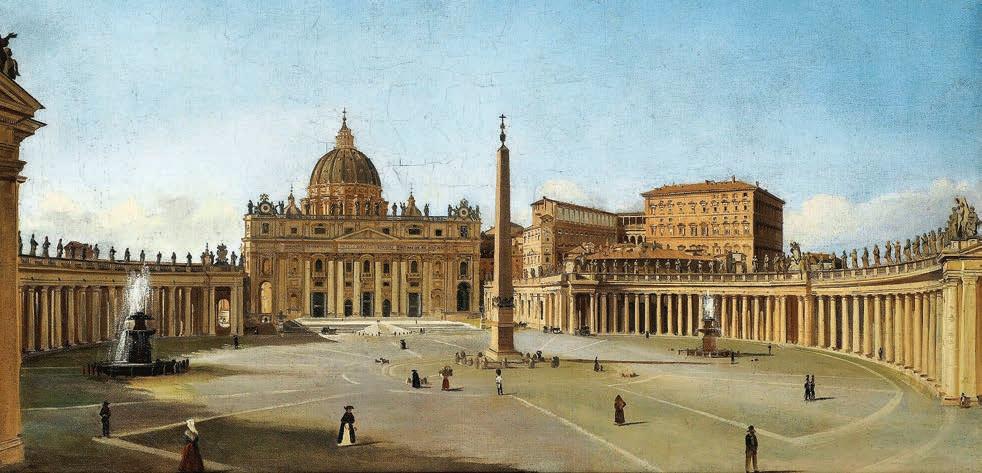
PAPAL PROXIMITY Schaff met Pope Gregory XVI (above) during a visit to Vatican City (above right). His recorded observations of this meeting revealed a literal proximity to the pope that later detractors would attribute figuratively to Schaff.
been called to Mercersburg to teach. Still many elements of Schaff’s lecture were new and controversial in an American church context foreign to him.
In his address Schaff insisted upon maintaining the connection between Roman Catholicism and Protestantism because, despite numerous “aberrant” practices, Catholicism had brought Christianity forward in time to the point where reformation was both necessary and possible. Approaching his defense from a Hegelian perspective, Schaff explained that the relationship between Protestantism and Catholicism displayed Christianity’s dialectic movement through history, until ultimately the church would unite on the great day of Christ’s return. Like a river, Schaff argued, extremes on both sides diverted the course of the church and might even carry it backward for a time, but forward progress continued in the deep waters of the mainstream. Eventually, all the shallow waters languishing along opposing shores would return to the river’s flow.
Schaff located the reforming principle that gave birth to Protestantism in this mainstream and anticipated a Protestantism in America that would absorb the various Protestant sects and denominations as they served out their corrective purposes. He foresaw the inevitable convergence among the churches as a sign of the coming kingdom. And so Schaff’s address ended on a hopeful note. He looked forward to an emerging “evangelical catholicism” on the soil of the New World: a magnificent union that would complete in the nineteenth century the reformation that was begun in the sixteenth century.
Despite Schaff’s hopeful vision, his address clashed significantly with both the denomination’s position and the region’s cultural climate. Only a few months before Schaff’s arrival in Pennsylvania, anti-Catholic rioting had broken out in President Berg’s neighborhood in Philadelphia—a
social tension affecting many American cities at that time. In addition, just one week before Schaff’s inaugural address, Berg himself had addressed the synod’s opening assembly, arguing that the German Reformed Church had maintained the purity and strength of the original apostolic church and that it received this heritage from protesting churches throughout history that were entirely uncontaminated by Roman influence. Their witness had culminated in the fourteenth century in the Waldensian community: the Waldensians were the true parent of the German Reformed Church in the United States, according to Berg. In this scheme a static Protestant orthodoxy that originated among the apostles served as the true Christian witness against the Roman Catholic Church, or what Berg called the “Church of the Antichrist.”
A starker contrast with Schaff is hardly imaginable. Berg convened a committee of the Philadelphia Classis in September 1845 to pursue charges of heresy against Schaff. The ensuing examination itself was anticlimactic: the Berg faction was completely dismissed. The Principle of Protestantism, by then translated into English by John Nevin, was declared by the Classis to promote the true interests of religion. Both Schaff and Nevin—who defended Schaff’s work tirelessly in articles in the denomination’s newspaper— were praised for their efforts to “build up and honor the welfare of the church.”
“IN ALL THINGS CHARITY”
With the unpleasantness of the heresy trial behind him, Schaff committed himself to life in America. Within a year of his arrival, he “married a Mary from Maryland” and settled into home life with Mary Elizabeth Schley. At the Mercersburg seminary he continued his defense of historical development with two key articles: “What Is Church History?” (1846) and “German Theology and the Church Question” (1852). In the larger context of interdenominational relations, Schaff pursued efforts to draw German and American churches into dialogue. He edited the journal Der Deutsche Kirchenfreund (1848–1853), which strove to publish the greatest scholarship from Germany for United, Lutheran, Moravian, and Reformed churches of German




























descent in America. The watchword for this publication was that of Lutheran theologian Rupertus Meledinius (1582–1651): “In essentials unity, in nonessentials liberty, in all things charity.”
When Schaff resigned from his editorial duties, his secondary school friend, William Julius Mann— subsequently professor at the Lutheran seminary in Philadelphia—took over responsibilities as editor. Schaff also lectured abroad about the state of religious affairs in America, resulting in the publication of his book America: A Sketch of the Political, Social, and Religious Character of the United States of North America (1855). And he wrote about events and people in Germany for an American audience, as in Germany: Its Universities, Theology and Religion (1857).
Philip Schaff was deeply committed to the worship life of the church and the devotional life of its members. He helped develop the German Reformed Church’s provisional liturgy of 1857, which reflected his Christocentric understanding of the church and affirmed its historical nature by including forms and phrases that extended across confessional lines and back to before the Reformation. He also produced a German hymnbook (1859) for use in the churches of various denominations and a Catechism for Sunday Schools and Families (1862).
BERG’S BEEF Joseph Berg (farleft), pastor and synod president, decried Schaff’s Catholicfriendly sentiments as heretical, but the Classis exonerated Schaff. Schaff’s Principle of Protestantism (left) explains his “evangelical catholicism” more fully.




REACHING ACROSS THE AISLE Interchurch and interfaith councils, like the 1893 World’s Parliament of Religions (below), displayed a growing ecumenical interest that Schaff’s theology had anticipated.
















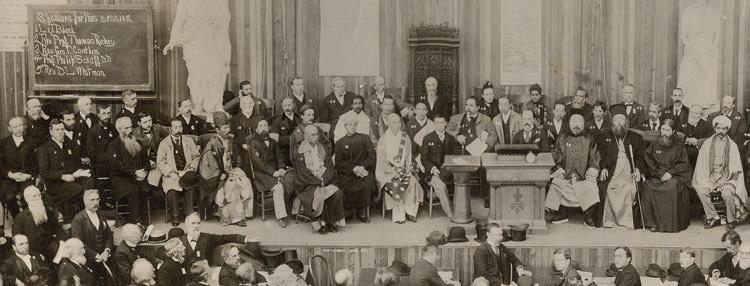
The arrival of the Civil War at nearby Gettysburg precipitated the departure of Schaff and his family from the seminary to New York City beginning in 1863. In 1870 he became a professor at Union Theological Seminary and remained there for another 22 years. Although Schaff’s optimism about the future seemed boundless, it was tempered by a familiarity with grief. Of the eight children he and Mary raised, only three survived to adulthood. He addressed this grief in his privately circulated volume, In Memoriam: Our Children in Heaven (1876).
Schaff considered the writing of church history to be central to the idea of the church itself and essential for the church’s development. His three-volume work Creeds of Christendom (1877), his seven-volume History of the Christian Church (1882–1892), and his scholarly collection of Nicene and Post Nicene Fathers (1886–1890) are fruits of this conviction. As an ambassador for the church universal, he also established societies that still foster scholarly conversations and collaborations, such as the American Society of Church History and the Society of Biblical Literature. And remarkably for a non-native English speaker, he traveled between Great Britain and the United States as chair of the translation committee to revise the King James Version of the Bible. Schaff delivered his final address—it could be called his last will and testament—in Chicago at the World’s Parliament of Religions in 1893. Entitled “The Reunion of Christendom,” the speech surveyed the religious landscape of the entire world, celebrated the progress of Christianity throughout the world, and envisioned in this development signs of the coming kingdom, to be achieved, or granted, perhaps, in the coming century. This providential vision of the church’s progress toward visible church union animated Schaff’s career and grounded the theological movement he and Nevin led: a movement breathed into being at Mercersburg CH
Theodore Louis Trost is professor in religious studies and New College at The University of Alabama.
In The Principle of Protestantism (1845), Philip Schaff argues, through the symbolic examples of Jesus’s closest disciples and Paul the apostle, that the inevitable end of Protestantism and Catholicism is an ecumenical communion.
It is an interesting and beautiful thought, (to be felt indeed only by those who have some sense for the philosophy of Church history) by which the three most conspicuous apostles, PETER, PAUL, and JOHN are made to stand as the representatives in character of three great stages of development, through which the Church is to be carried to its final consummation. We meet the idea even among some of the old theologians. . . .
The Lord chose three favorite disciples, who are to be regarded as types at the same time of as many stages of development for the Church. Peter, the apostle of the Father, the New Testament Moses, or the representative of the principle of authority and law, answers in his personality and form of doctrine to the first stadium [stage] of Church history, the period of Catholicism, flowing over in the end to popery itself. Paul, the apostle of the Son, the New Testament Elias, the representative of the principle of movement, and of the free justifying power of faith, is the type of Protestantism.
Both stages, separately taken, are one-sided and incomplete. The principles of authority and freedom, law and gospel, hope and faith, must at last become united. The Roman Catholic Church, it is true, has like Peter denied her Lord by a threefold gradation in the way of apostasy; but she will one day yet go out and weep bitterly. Then will the Lord turn towards her with a look of compassion, and restore her again to confidence and trust.
This will be, at the same time, the epoch of the final reconciliation of both communions. So united, they will form the ideal Church, whose type is exhibited to us in the disciple that lay on Jesus’s bosom, the apostle of the Holy Ghost, the apostle of that love which shall never fail, the law of freedom made perfect and complete in the gospel. To him corresponds, under the old economy, John the Baptist, in whose person the rigor of the law and consolation of prophecy are united. As he immediately preceded the first appearance of Christ, like the dawn of morning, so also the revivification of the spirit of John the evangelist, in the Church, will open the way directly for his second coming, to establish the Church absolute and triumphant, in which


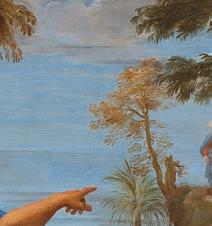









law and freedom shall both be perfect in one, and the results of all previous development appear conserved as the constituent elements of a higher and more glorious state. To this refers the mystical sense of Christ’s word, John 21:22, where he speaks enigmatically of John’s tarrying till his second coming.
May the Nineteenth Century, by a magnificent UNION, consummate the ever memorable Reformation of the sixteenth! May the New World, enwombing the life spirit of almost every nation of the Old, prove the birth soil of this new era for the Church! As the distractions of Protestantism have been most painfully experienced here, so here also may the glorious work of bringing all the scattered members of Christ’s body into true catholic union be carried forward with the greatest zeal and soonest crowned with the great festival of reconciliation, transmitting its blessings, in grateful love, to the world we honor and love as our general fatherland.

















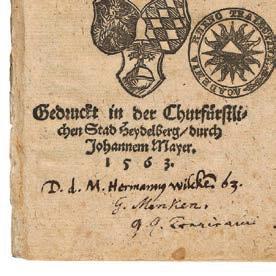


— 1563 The Heidelberg Catechism, a favorite document of the Mercersburg movement, is written.
— 1790s–1820s The Second Great Awakening popularizes revivalism in America




— 1803 John Williamson Nevin is born to a Presbyterian family in Pennsylvania He will study at Union College and Princeton Seminary.
— 1819 Philip Schaff is born in Switzerland. He will study at universities in Tübingen, Halle, and Berlin.
— 1825 The Seminary of the German Reformed Church in America is founded. Its move to Mercersburg, Pennsylvania, in 1837 will eventually give the movement its name.
— 1830–1840 Nevin teaches Bible at Western Theological Seminary in Pittsburgh. He reads August Neander’s General History of the Christian Religion and Church.
— 1832–1841 Frederick Augustus Rauch teaches at the seminary, introducing German theology and philosophy.
— 1834 Friedrich Schleiermacher publishes his final edition of The Christian Faith. This systematic theology serves as an important inspiration for the Mercersburg theology.
— 1837 Georg Wilhelm Friedrich Hegel’s Lectures on the Philosophy of History is published, arguing that history is a spirit-led developmental process.
— 1840 Nevin teaches in Mercersburg and joins the German Reformed Church.






— 1841 Schaff attends Friedrich Schelling’s Berlin lectures on the “Philosophy of Revelation.” He will draw on both Hegel and Schelling in articulating Mercersburg’s idealist view of history as organic and developmental.


— 1844 Nevin publishes The Anxious Bench, arguing against revivalism and for the “system of the catechism,” emphasizing lifelong nurture within the church
1844 Schaff comes to Mercersburg. Nevin and Schaff begin to collaborate.
— 1844 Nevin preaches his “Catholic Unity” sermon, claiming that the life of Christ is given to believers through the means of grace offered by the church.
— 1845 Schaff’s inaugural address, The Principle of Protestantism , is published. Schaff argues that each stage in the history of the church grows organically out of its predecessors and contributes to the church’s final unity in one body.
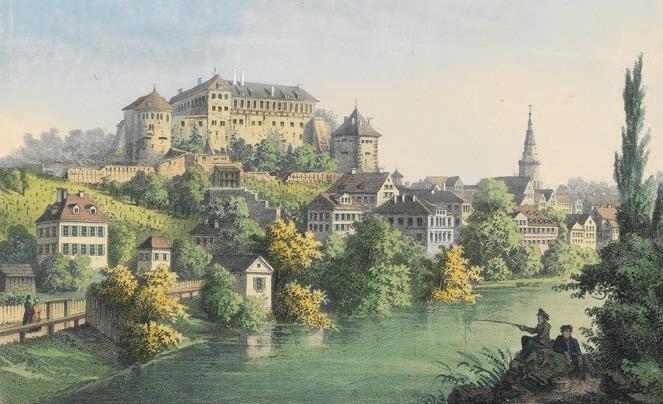

1845 Schaff is tried and acquitted of heresy and of Roman Catholic tendencies.
— 1846 Nevin publishes The Mystical Presence, the most famous expression of Mercersburg theology. It stresses the Incarnation as the essential starting point of Christianity and the centrality of the Eucharist in Christian worship. Nevin and Charles Hodge engage in heated debate.
— 1848 Nevin publishes Anti-Christ, or the Spirit of Sect and Schism, decrying the individualism and sectarianism of American Christianity.
— 1849 The Mercersburg Review is founded to promote Mercersburg theology.
— 1849 The Eastern Synod of the German Reformed Church requests a new liturgy. Nevin and Schaff serve on the liturgical commission.
— 1851–1856 Nevin experiences his “dizziness.” He ponders conversion to Roman Catholicism but remains Protestant.
— 1857 The provisional liturgy of the German Reformed Church is presented for congregational trial. Mercersburg theology influences its style of worship.
— 1866 The German Reformed Church issues An Order of Worship for the Reformed Church for optional congregational use. Controversy ensues over its sacramentalism.

— 1866 –1879 Nevin serves as president of Franklin and Marshall College.
— 1886 On June 6, Nevin dies in Lancaster, Pennsylvania.
— 1887 A German Reformed commission offers a compromise liturgy, The Directory of Worship. Through this, Mercersburg-style worship continues to shape future generations.
— 1891 Emanuel Gerhart, a student of Nevin and Schaff, publishes the first volume of his Institutes of the Christian Religion, a systematic presentation of Mercersburg theology.
— 1893 Schaff speaks at the World’s Parliament of Religions in Chicago. After a stroke, Schaff dies on October 20.
— 1894 Gerhart releases the second volume of his Institutes
— 1934 The German Reformed Church merges with the Evangelical Synod of North America to create the Evangelical and Reformed Church, incorporating Mercersburg emphases.
— 1957 The United Church of Christ is formed via the merger of the Evangelical and Reformed Church and the Congregational Christian Church. Mercersburg theology influences this denomination and the ecumenical church.
— 1983 The Mercersburg Society is founded to promote the study of Mercersburg theology, affirming the gospel of Jesus Christ for the sake of the church and the world in the present.
Anne T. Thayer, professor emerita of church history at Lancaster Theological Seminary






— 1855 Schaff’s America is published. He reflects on the evils of slavery, materialism, and sectarianism in the United States and on the potential for creating unity out of diverse denominations
— 1870 Schaff joins the faculty of Union Seminary in New York City.
— 1876 Schaff publishes The Creeds of Christendom. He is now a major spokesperson for ecumenism.
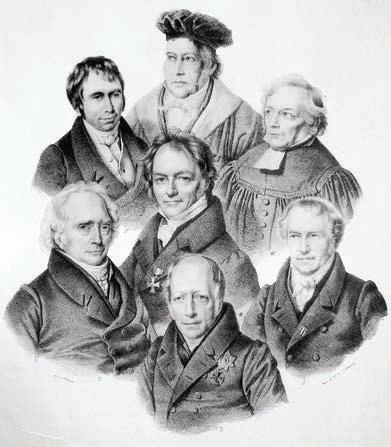









William B. Evans
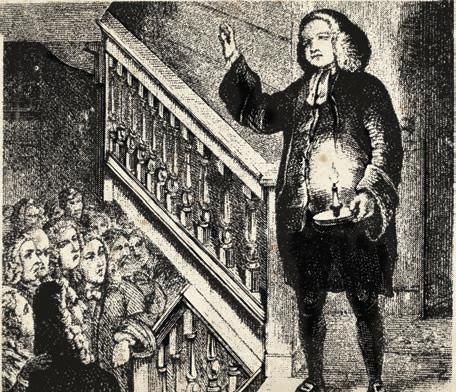
Perhaps no movement has shaped the piety, practice, and theology of American Protestant Christianity more than revivalism. As revivals swept the nation, thousands heard and received the gospel; hundreds were inspired to take the gospel westward across the country and eastward across the Atlantic. And yet amid revivalistic triumphs, excesses and failures alarmed the movement’s detractors. In this context heated controversy over revivalism and its effect on German Reformed churches in Pennsylvania emerged and, in response, so did the Mercersburg theology. But why exactly did Mercersburg theologians such as John W. Nevin come to loggerheads with revivalism?
“NEW
American revivalism’s distant roots lie in the Puritan concern for heart religion and true conversion. Upon their arrival in New England, Puritans began to require a convincing “relation” or narrative of one’s conversion as a condition for church membership. Composing such relations
REFLECTION AND REVIVAL Puritans (above) believed that “true conversion” required a self-examination that took time to unfold in a believer’s life. With the rise of charismatic, intinerant preachers such as George Whitefield (left), emphasis on conversion changed to a more immediate transformation. Both Awakenings centered on this intense, personal experience.
involved considerable introspection, and they reflected an understanding of conversion found in the writings of English Puritans such as William Perkins (1558–1602), who had identified 10 stages of true conversion. These Puritans were Calvinists—they regarded this process as the work of a sovereign God who chooses some for salvation. But this Puritan understanding of the conversion process often took considerable time to play out in a person’s life, and the need to discern and chronicle it often fostered an introspective piety.
The First Great Awakening in the 1740s marked a new stage in the development of American revivalism (see CH #151). The most prominent figure here was the “Grand Itinerant”—the evangelical Anglican George Whitefield (1714–1770), whose preaching attracted large crowds throughout the colonies. A new style of preaching emerged, involving dramatic sermons designed to elicit conversion. Listeners were exhorted to experience the “new birth” then and there, rather than wait for the Puritan process of conversion to unfold. Whitefield also embodied the job description for a new and lasting figure in American religion—the itinerant or traveling evangelist.
Like their Puritan forebears, Whitefield and ministerial colleagues such as Jonathan Edwards (1703–1758) and Gilbert Tennant (1703–1764) were Calvinists who affirmed the sovereignty of God in salvation. But the Puritan emphasis on introspective subjectivity was, if anything, heightened. Whitefield, for example, insisted that the “new birth” was an intense experience that one could not fail to recognize.
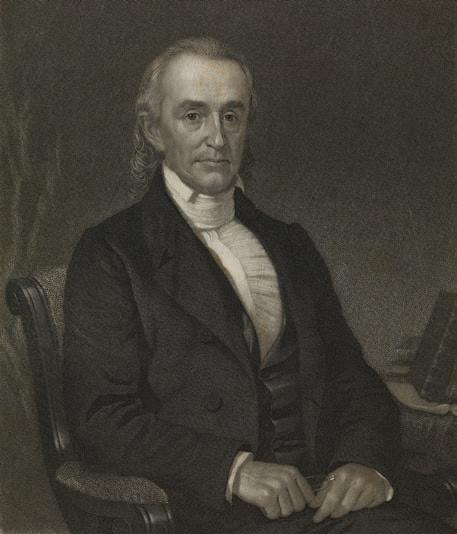
These two emphases—a stress on divine sovereignty and an increasing focus on human experience and agency—would eventually come to stand in tension.
The Second Great Awakening cemented revivalism as a dominant stream in American religion. Revivals sprang up in upstate New York during the 1820s and 1830s with Charles Grandison Finney (1792–1875) driving the action. Finney, as part of a broader trend during this period, moved away from Calvinism and toward an emphasis on human freedom and agency. Americans increasingly began to believe that human beings are sovereign in politics and in religion. Consistent with this, Finney contended that nothing is miraculous about a revival of religion; it is the result of applied techniques appropriate to the task. In his Lectures on Revivals of Religion, Finney wrote: “It is not a miracle, or dependent on a miracle, in any sense. It is a purely philosophical [i.e., natural] result of the right use of the constituted means.”
And so Finney utilized methods, or “New Measures,” designed to elicit conversions: direct and accessible preaching, public calls to repentance, evocative public prayers by women, house-to-house canvassing, and, most famously, the “anxious bench”—a bench or row of pews at the front of the church to which the unconverted were urged to come and contemplate their need for salvation. Through New Measures, Finney succeeded in converting thousands.
Itinerant Methodist ministers had long preached in similar fashion, and a host of imitators of Finney traversed the region of upstate New York. This area came to be known as the “burned-over district” because of how
PREDICTABLE RESULTS Charles
a natural con-
revivals swept through, leaving the populace emotionally exhausted, the area spiritually barren, and the people susceptible to a variety of unconventional religious movements.
Theology was also being retooled to fit these revivalist practices; human agency and ability were emphasized, and traditional Calvinist notions of total depravity and helplessness in the face of sin were downplayed. Key here was Nathaniel William Taylor (1786–1858), who taught at Yale from 1822 to 1857.

In his 1828 sermon “Concio ad Clerum,” Taylor contended that depravity does not consist in a sinful human nature inherited from Adam, or in any disposition or tendency to sin. Rather human sinfulness consists simply of the act of sinning and depravity in the fact that “such is their nature, that they will sin and only sin in all appropriate circumstances of their being.” In other words sin cannot be explained by any antecedent cause; while all human beings do sin, they have the power to do otherwise. Thus Taylor softened traditional Reformed teachings on human depravity and laid a foundation for revivalist techniques that assumed a more optimistic anthropology. Revivals were increasingly seen, not as a sovereign work of the Spirit of God which “bloweth where it listeth,” but as the scheduled work of preachers who encouraged people to repentance and faith.
When Nevin arrived in Mercersburg in 1840, methodological revivalism was making inroads in the German Reformed and Lutheran churches of Pennsylvania. A visiting minister attempted to implement Finney’s methods at the German Reformed church in Mercersburg, which Nevin opposed. In 1843 the first edition of The Anxious Bench was published, followed quickly by an expanded second edition in 1844. This work was simultaneously an analysis of the psychology of revivals, a critique of the theology informing revivalism, and the first extended presentation of the Mercersburg theology. Nevin indicates at the outset that his concern is not so much the anxious bench itself; rather that the bench symbolizes a system of religion coming to expression in New Measures revivalism. The anxious bench, he continues, is a novelty and incompatible with the historic practices of the church. He rejects pragmatic arguments from the apparent efficacy of revival techniques, insisting instead that the anxious bench is a form of “quackery” that substitutes transient psychological manipulation for lasting spiritual power. As Nevin describes this revivalist perspective, “Conversion is everything, sanctification nothing. Religion is not regarded















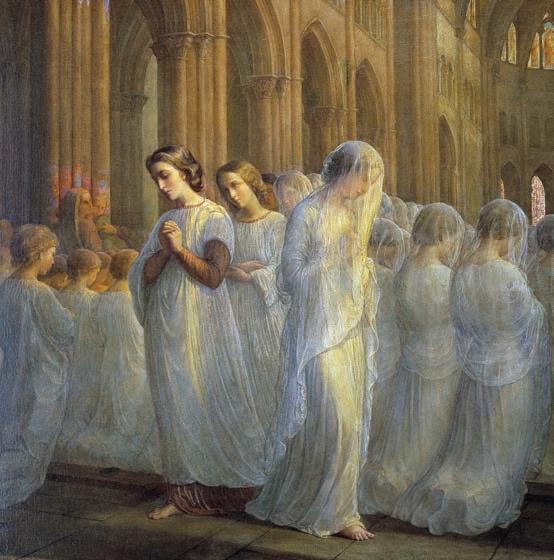
as the life of God in the soul that must be cultivated in order that it may grow, but rather as a transient excitement to be renewed from time to time by suitable stimulants presented to the imagination.”
In Nevin’s polemic we sense a bit of cultural elitism at work—he clearly regarded Finney’s revivals as tacky and unrefined. “As the spirit of the anxious bench tends to disorder, so it connects itself also naturally and readily with a certain vulgarism of feeling in religion that is always injurious to the worship of God, and often shows itself absolutely irreverent and profane.” And echoing a common theme in the antirevivalist literature of the day, Nevin viewed the expanded role of women in revivalist circles as further evidence of “grossness and coarseness in religion.”
More substantial is Nevin’s psychological and theological analysis of revivalism. The bench, he argues, poses a false issue for the conscience in that it substitutes the outward act of going forward to the anxious bench for an actual encounter with God, and it creates distractions in the minds of those who are genuinely concerned about their spiritual state.
Nevin references that portion of upstate New York where the efforts of Finney and others had been concentrated. Methodological revivalism, with its enervating focus on emotional subjectivity, had “passed as a wasting fire” through the area. Ironically this region spawned a variety of new religious sects such as the Mormons and the Oneida perfectionists, which, for all their differences, viewed religion as a matter of behavior rather than emotional experience. Most important for Nevin, the anxious bench is a “heresy.” The problem here is an overestimation of human ability and an underestimation of the problem of sin: “Finneyism is only Taylorism reduced to practice, the speculative heresy of New-Haven actualized in common life. A low, shallow, pelagianizing theory of religion runs through
it from beginning to end.” Pelagius, we will recall, was the early fifth-century theologian who emphasized free will and held that “original sin” is nothing more than bad examples that we choose to follow.
In the final chapter, Nevin presents his comprehensive alternative to the “system of the anxious bench”—what he terms the “system of the catechism.” Just as the anxious bench is a symbol for the larger system of revivalism that viewed conversion as the key moment in the Christian life, so also the catechism symbolizes the system of Christian nurture involving catechetical instruction, pastoral care, and the ministry of the word and sacrament—in short, the traditional means of grace found in the bosom of the church. Here Nevin contrasts what are, in his understanding, two distinct models of Christian piety—one focused on self-generated isolated experience, the other on a process of churchly nurture assisted by divine grace throughout life.
According to Nevin the deeper problem with New Measures revivalism is that it assumes an abstract individualism in which the convert is seen as a willing agent apart from the concrete situation in which he or she exists. For example the problem of sin is not simply in the act of sinning (as Taylor maintained). Rather it is a sinful condition, an organic disease, that all human beings share with Adam. Thus the general (the human condition in which all share) precedes and shapes the individual. Nevin goes on to argue that the “generic life,” the organic state of being “in Adam,” must be countered by a union with Christ that is just as deep and organic: [Human] nature is restorable, but it can never restore itself. The restoration to be real, must begin beyond the
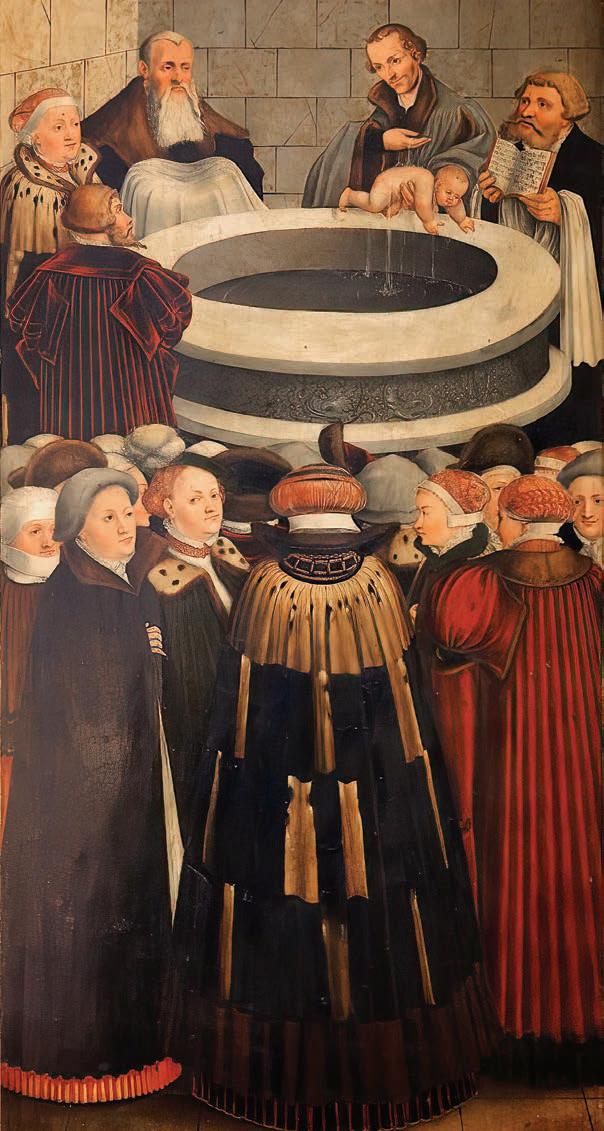
individual. In this case as in the other the general must go before the particular, and support it as its proper ground. Thus humanity fallen in Adam, is made to undergo a resurrection in Christ, and so restored flows over organically as in the other case to all in whom its life appears. The sinner is saved then by an inward living union with Christ as real as the bond by which he has been joined in the first instance to Adam.
Here Nevin reveals the focus of Mercersburg theology: the person of Christ. This Christ-centeredness implies, moreover, the centrality of the church as the body of Christ. The source of this saving restoration, Christ himself, is to be found in the life and ministry of the church. Once again the general precedes the individual. The church is not to be thought of as merely the aggregate of individual Christians, as a “sandheap” as Nevin often terms it:
Due regard is had to the idea of the Church as something more than a bare abstraction, the conception of an aggregate of parts mechanically brought together. It is apprehended rather as an organic life springing perpetually from the same ground, and identical with itself at every point. In this view the Church is truly the mother of all her children. They do not impart life to her, but she imparts life to them.

COUNTERING THE HUMAN CONDITION Sin, for Nevin, is a condition passed from fallen Adam to all humanity; union with Christ alone can restore us (above). As the body of Christ, the church serves a crucial, restorative purpose. Hence Nevin sees baptism, with the Catholic tradition and many early Reformers, as the decisive inception of the Christian life. (At left, this Cranach painting depicts Reformer Philipp Melanchthon baptizing an infant.)
For Nevin, this churchly sensibility has substantial practical implications. Children are baptized into the church with the expectation that they will grow into faith as they are nurtured by the means of grace, and this without need for the “sudden and violent” emotions of the revival service:
[I]t is counted not only possible, but altogether natural that children growing up in the bosom of the Church under the faithful application of the means of grace should be quickened into spiritual life in a comparatively quiet way without being able at all to trace the process by which the glorious change has been effected. Of course family life, and the spiritual nurture it provides, is fundamental to this view of the church.
The pastoral ministry of the word and sacrament are central to this “system of the Catechism” that Mercersburg preached and practiced. This, for Nevin, includes not only the stated weekly church services, but also household visitation by ministers. Nevin concedes that this ongoing pastoral care may be less exciting than the sound and fury of the anxious bench, but he avers that “the common and the constant are of vastly more account than the special and transient.”
In Nevin’s exposition of the “system of the Catechism,” we see important themes that would be central to the Mercersburg theology as it developed—organic union with Christ, the generic humanity of Adam and Christ that determine the identity of those joined with them, the mediation of the church, the priority of the general over the particular, and the corporate church over the individual Christian. CH
William B. Evans is the author of A Companion to the Mercersburg Theology: Evangelical Catholicism in the MidNineteenth Century, from which this article is adapted.













John Williamson Nevin and “New Measures” revivalism
In this edition of The Anxious Bench (1844), Nevin critiqued revivalism as shallow, compared to the steady ongoing life of the church. Though fierce in his assessment, he supported true revival as a beautiful consequence of faithful teaching within the church.
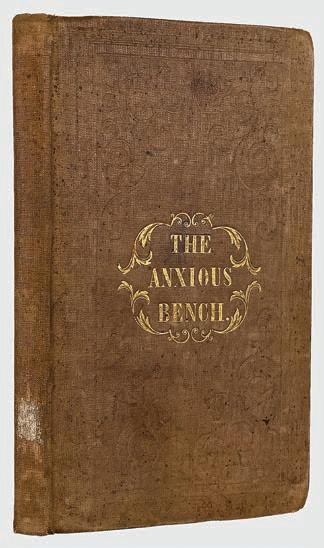
It is proposed to institute a free inquiry into the merits of the Anxious Bench, as it has been used extensively of late years in the service of religion. My object will be to show, that the measure is adapted to obstruct rather than to promote the progress of true godliness, and that it deserves to be discouraged on this account . . . .
It will be understood, that the Anxious Bench is made to stand, in this case, as the type and representative of the entire system of what are technically denominated in our day, “New Measures .” It opens the way naturally to other forms of aberration, in the same direction, and may be regarded in this view, as the threshold of all that is found to follow, quite out to the extreme verge of fanaticism and rant. The measure belongs to the system, not in name simply, but in its life and spirit. At the same time, it is the most favorable aspect, in which the cause of New Measures can be presented to our view. The simple Anxious Bench, as it is often used in a sober way, is the most moderate and plausible shape the system can well take. If this then be found unworthy of confidence, the whole system will be shorn of its title to confidence. — Chapter 1
It is a vastly more easy thing to carry forward the work of religion in this way [through periodic revivalism], than it is to be steadily and diligently true to the details
A PELAGIAN PROBLEM? The Anxious Bench (above) identifies theological problems in Finneyite revivalism, particularly the emphasis of individual choice over the work of God in salvation.
of ministerial duty, as prescribed by the apostle Paul… to be known in the family visitation, in the sick chamber, in the dwelling places of poverty and sorrow, as the faithful pastor, “watching for souls,” whose every presence serves to remind men of holiness and heaven, not at certain seasons only, but from month to month, from one year always to another; all this is something great and difficult, and not to be compassed without a large amount of inward spiritual strength. But it calls for comparatively little power, for a man to distinguish himself as a leader in periodical religious excitements, where zeal has room for outward display, and wholesale action is employed to discharge within a month the claims of a year. — Chapter 3
It is a most unfair view again of the system of the Catechism, to think of it, or speak of it, as unfriendly to all special and extraordinary forms of action, in the work of the gospel. The system, it is true, makes more account of the regular, the ordinary, and the general, than it does of the occasional and the special; more account of rills, and the perpetually flowing breezes of heaven, than of mountain torrents, water-spouts, and storms. But it does not by any means preclude the presence of what is out of the usual way, or refuse to suit itself to its requirements when it comes. The extraordinary in this case however, is found to stand in the ordinary, and grows forth from it without violence, so as to bear the same character of natural and free power. It is not the water-spout, but the fruitful plentiful shower, causing the fields to sing, and the trees of the wood to clap their hands for joy. Such is the true conception of a Revival. For such special showers of grace, it is the privilege of the Church to hope, and her duty to pray, at all times
Wherever the system of the Catechism is rightly understood, and faithfully applied, it may be expected to generate revivals in this form; though in proportion to the measure of this faithful use, it may be said, the ordinary and the extraordinary as here distinguished will be found continually coming closer and closer together, till in the end they may appear almost identical, and the church shall seem to bask, as on the “Delectable Mountains,” in the perpetual sun-height of heaven itself. — Chapter 7
Any attempt to change a church’s worship is fraught with conflict. In recent decades many books have been written about the “worship wars” in American Protestantism. But conflicts over worship are nothing new. One might even read the Bible itself as a narrative about one worship war after another, from Genesis to Revelation: arguments over whom God’s people are to worship, how they are to worship, and even where they are to worship. The history of the people of God is, among other things, the history of worship wars.
One such worship war broke out in the German Reformed Church in the mid to late nineteenth century when the denomination embarked on a process of revising its liturgy. By any measure its results were mixed, with some in the German Reformed Church embracing these revisions and others denouncing them. Yet the liturgical manual they produced has had far-reaching significance for Reformed churches around the world.

When the German Reformed Church first began to establish congregations in America in the early 1700s, they lacked many resources. While they had a liturgical tradition going back to the Reformation, shaped by the Reformed liturgy from the German Palatinate (centered in Heidelberg), this liturgy was largely unavailable for these colonial congregations. It became a distant memory by the middle of the nineteenth century. The worship of the German Reformed Church varied from one congregation to another, as was the case in other American Reformed denominations.
In 1849 the Synod of the German Reformed Church (its national assembly) appointed a committee to produce a revised liturgy for the denomination. Philip Schaff served as the committee’s chair, and John Nevin was a member of the committee as well. As the two figures at the center of the Mercersburg movement, they had significant influence on the shape of the liturgy the committee proposed. The worship manual they produced was a liturgical expression of Mercersburg theology. The first edition of the liturgy was published late in 1857 under the
REFORMATION ROOTS Though the German Reformed Church had a liturgy as old as the Reformation, its immigrant churches had lost access to it. This German painting pictures a 16th-c. liturgical book.
title The Liturgy or Order of Christian Worship, though it was known better as the “provisional liturgy,” given its interim nature. The final revised liturgy, published with the title Order of Worship for the Reformed Church in the United States, came out in 1866.
While some in the German Reformed Church wished simply to resurrect the liturgy of the Palatinate and go no further back than the Reformation, the committee sought to produce a liturgy that drew on the history of the Christian church from its earliest days to the present. At the same time, the committee realized that any form of worship they included had to be relatable to those who were expected to use it. To this end the committee drew from the worship life of the ancient, medieval, and Reformation periods, looking for what would be useful to a denomination planted in the United States.
In addition the work of the committee reflected the reading of church history shared by Schaff and Nevin.













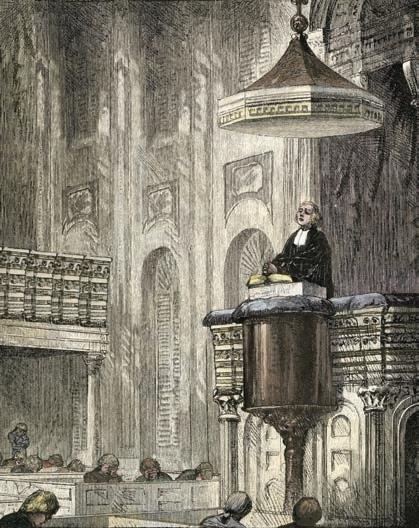
While they both agreed that the Reformation remained a profoundly important period, they thought that even the Reformation was but one part of the larger history of the church that should not be broken off from what preceded it. For Mercersburg theology the Reformation was a reform movement within the holy catholic church, and not simply a rejection of all that had come before.
. . . A LITURGY REIMAGINED
This approach led the committee to produce a liturgically rich form of worship. Its critics, however, saw in this liturgy a rejection of certain Reformed doctrines. For example, the Communion “table” was referred to as an “altar,” which drew the ire of some. The Communion prayer used language some saw as too similar to a Roman Catholic notion of eucharistic sacrifice. Many of the same critics judged that the ordination service introduced a doctrine of ministry that was too priestly and out of keeping with the traditional doctrine and practice of the Reformed tradition. Even the fact that the proposed liturgy provided set responses for the worshipers became an object of criticism.
All of this led to a series of articles, monographs, letters, and debates on the floor of the synod and the classes (regional bodies of the denomination). Some parts of the denomination accepted the Order of Worship, but others rejected it. John H. A. Bomberger (1817–1890), who served on the committee, eventually became its fiercest critic (see pp. 38–41). He argued that the committee’s finished product was an attempt to impose “ritualism” on the German Reformed Church. But Nevin himself was among the most avid and able defenders of the new liturgy.
Broadly speaking the eastern portion of the German Reformed Church, which was in closer proximity to Mercersburg (and Lancaster, Pennsylvania, where the seminary later relocated in 1871), supported and
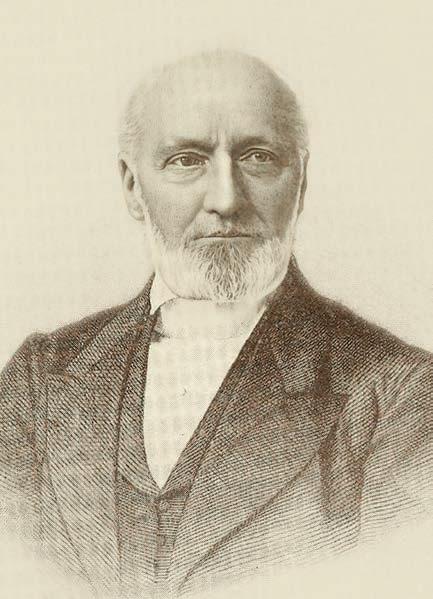
WORSHIP HIGHS AND LOWS John H. A. Bomberger (above left) was a pastor in the German Reformed Church and on its Liturgical Committee alongside Schaff and Nevin. He disagreed vehemently with the “high-church” elements Schaff (above) wanted to introduce. Throughout his life Bomberger would identify with a “low-church” position, much like the Puritans held (above middle). He later became the first president of Ursinus College.
appreciated the liturgy. Much of the opposition was among congregations and ministers in the western portion of the denomination (in states like Ohio) and in the South (particularly in North Carolina). By 1881 the synod of the denomination appointed a “Peace Commission” to work toward reconciliation in the denomination because of the conflict produced by the liturgical controversy.
In the end diversity of practice continued to characterize the liturgical life of the German Reformed Church (later simply the Reformed Church in the United States, or RCUS). But even the liturgies created by critics of the Order of Worship used much of what was in it, though they removed the portions they found objectionable. The RCUS came out of the liturgical controversy with a deeper sense of the meaning of its worship. So while not a complete success by any measure, the Order of Worship had a long-lasting impact on the life of the denomination.
One may find, still today, congregations with an architecture inspired by Mercersburg theology and the liturgy of the Order of Worship among old German Reformed Churches now within the United Church of Christ (UCC). These church buildings have a “divided chancel” (with a lectern and pulpit on either side of the chancel) with the Communion table at the center, with altarlike woodwork on the wall behind the table.
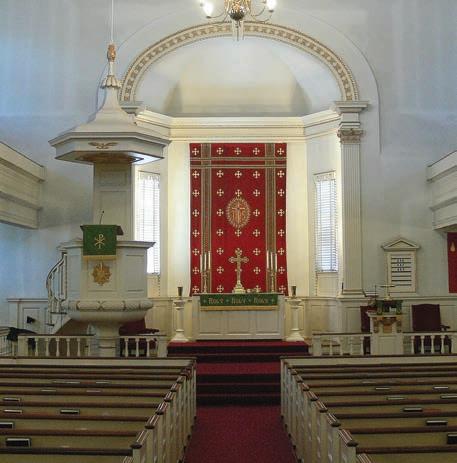

in Telford, Pennsylvania (above), shows the lasting impact of the provisional liturgy.
But perhaps the most significant and longest lasting influence of the Order of Worship was its international, ecumenical impact. In the latter part of the nineteenth century, many Reformed denominations in the Englishspeaking world (including North America and Great Britain) began to reassess the worship life that they had inherited. While many Reformed Protestants simply assumed that their worship was a continuation of the practices of the Reformation, more scholars and pastors became acquainted with the older liturgies of the Reformation and saw a difference.
They discovered that the worship they had inherited (“the worship of our fathers,” as they would say) was largely shaped by a kind of antiliturgical Puritanism.
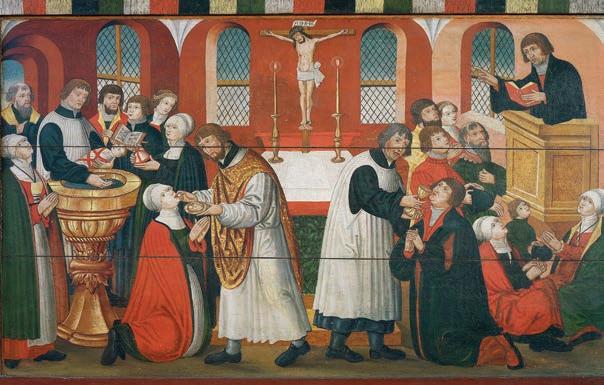
THE DIFFERENCES An anonymous painting from the 17th c. (above) compares worship in Calvinist and Lutheran congregations. Doctrinal emphases influenced the style, structure, and even architecture of worship.
This led to something of a liturgical “recovery” movement on both sides of the Atlantic among Reformed Protestants.
Elements that had disappeared from Reformed worship under the censure of Puritanism (like the regular use of the Ten Commandments, the Lord’s Prayer, the Apostles’ Creed, the Doxology, etc.) had been present in the liturgies of the Reformers. Thus the latter half of the nineteenth century became a time of liturgical study, discovery, recovery, and adaptation for Reformed denominations. Interested pastors began to produce unofficial books of worship, and denominations later followed with official versions.
The German Reformed Church, in many ways, led this movement. In fact the liturgies appearing in the Order of Worship became resources for both American and Scottish Reformed denominations as they produced their own Book of Common Worship or Book of Common Order. So while the influence cast by the work of the Liturgical Committee of Schaff, Nevin, and others may have had limited immediate impact in their own denominational world, it contributed to a rich recovery of Reformed worship internationally. It also served as a catalyst for an ecumenical interest in recovering more ancient practices of worship.
The Liturgical Committee, gathering as it did in the homes of its members or in the church buildings where they served, probably could not have imagined that the work they were doing would develop beyond just one more worship war—becoming instead an influence on liturgy and worship practices across denominational lines and around the world CH
Walter














Th e whole Congregation now rising [after confession] , the Minister shall proceed: The Lord be with you.
And with thy spirit . Lift up your hearts.
We lift them up unto the Lord. Let us give thanks unto the Lord our God. It is meet and right so to do.
It is very meet, right, and our bounden duty, that we should at all times, and in all places, give thanks unto Thee, Lord God Almighty, Father, Son, and Holy Ghost. Before the mountains were brought forth, or ever Thou hadst formed the earth and the world, even from everlasting to everlasting, Thou art God. Thou didst in the beginning create all things for Thyself. By Thy word were the heavens made, and all the host of them by the breath of Thy mouth. The armies of the invisible world, angels and archangels, thrones, dominions, principalities and powers; the glorious firmament on high, sun, moon, and stars; the earth and the fullness thereof; all are the work of Thy hands, and all are upheld by Thee continually in their being, as they stand by Thee, likewise, in their appointed order and course.
[The prayer describes the creation, fall, and redemption of humanity, and offers praise to the Trinity.]
Thee, mighty God, heavenly King, we magnify and praise. With patriarchs and prophets, apostles and martyrs; with the holy Church throughout all the world; with the heavenly Jerusalem, the joyful assembly and congregation of the first-born on high; with the innumerable company of angels round about Thy throne, the heaven of heavens, and all the powers therein; we worship and adore Thy glorious name, joining in the song of the Cherubim and Seraphim, and with united voice, saying: Here let the people join aloud in the Seraphic Hymn Holy, Holy, Holy, Lord God of Sabaoth; heaven and earth are full of the majesty of Thy glory. Hosanna in the highest! Blessed is He that cometh in the name of the Lord. Hosanna in the highest!
ORDERING WORSHIP (above) Although the liturgy created controversy in its time, much of it is still used today.
Then the Minister shall proceed: [Here the Words of Institution are given, in all capitals, with instructions for the minister to take and break the bread and to take and display the cup.]
Let us pray.
ALMIGHTY God, our heavenly Father, send down, we beseech Thee, the powerful benediction of thy Holy Spirit upon these elements of bread and wine, that being set apart now from a common to a sacred and mystical use, they may exhibit and represent to us with true effect the Body and Blood of Thy Son, Jesus Christ; so that in the use of them we may be made, through the power of the Holy Ghost, to partake really and truly of His blessed life, whereby only we can be saved from death, and raised to immortality at the last day. Amen.
[The prayer continues that God will accept the “memorial of the blessed sacrifice of Thy Son,” not through the merits of the worshipers but through the merits of Christ; and then a prayer consecrating the worshipers “on the altar of the gospel.” Then follows an entire litany of prayers for the church and the world.]
Here let the people join aloud in the Lord’s Prayer.
[Text given. The minister then gives a lengthy blessing.]
Here the Holy Communion shall take place.
[Instructions are given for Communion.]
When all have communicated, the Minister shall offer a free Prayer, or the Post-Communion Prayer may be said:
[An optional post-Communion prayer is given.]
Then shall be sung or said the Te Deum, unless it may have been used in the first part of the service; in which case it will be proper to use instead of it here, the Gloria in Excelsis, or a part of the 103rd Psalm. After which the Minister shall pronounce. . . this Benediction:
[A benediction drawn from Philippians 4:7 is given.]
from A Liturgy: Order of Christian Worship by The German Reformed Church in the United States of America (1857)
Annette G. Aubert
In Mercersburg’s early days, controversy propelled its theology to public attention; the Civil War and national turmoil caused that attention to fade. Yet even after momentum waned, the movement continued, and in the present day, we see its theology as cohesive and systematic rather than as a collection of loosely related, similar ideas. What made this possible?
Mercersburg’s students, who sat under John Nevin’s and Philip Schaff’s teaching, later advanced it. Of those who went on to make distinctive contributions to the Mercersburg movement, and American religion as a whole, Emanuel Vogel Gerhart (1817–1904) is perhaps the most important.
Gerhart was born in Freeburg, Pennsylvania, in 1817 to a family whose ancestors had immigrated to the United States from Alsace in 1730. His father, Isaac Gerhart (1788–1865), was one of the first German Reformed Church ministers in North America. His mother, Sarah Vogel Gerhart (1790–1861), was raised in a French Lutheran environment. Emanuel himself eventually raised four children with Eliza Rickenbaugh, whom he married in 1843.
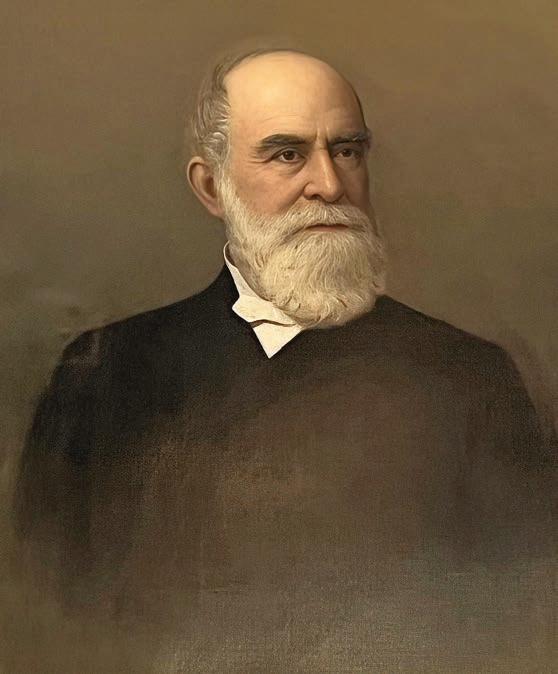
After receiving a homeschool education from his father, Gerhart excelled academically at the Classical School of the German Reformed Church in York, Pennsylvania. He had the privilege of being educated by Frederick August Rauch (see pp. 38–41), another German immigrant. Rauch introduced Gerhart to many German intellectual traditions and philosophical ideas in his native language, resulting in Gerhart’s thorough knowledge of the works of German authors and of the foundational ideas underlying Romanticism and the Enlightenment.
After graduating from Marshall College in 1838, Gerhart continued his studies at Mercersburg Theological Seminary. There he first heard Nevin’s proposal that a theological system should be founded on the principle of the Incarnation. Gerhart was also introduced to German theology and the idealist philosophy of Hegel at Mercersburg.
Arguably Gerhart’s most important contribution to the Mercersburg movement was his dogmatic Christocentric
LEARNING THE MERCERSBURG WAY Emanuel Vogel Gerhart was steeped in the philosophies and theological ideas that informed the Mercersburg movement. Throughout his school years, his teachers included Frederick August Rauch, John Nevin, and Philip Schaff.
work Institutes of the Christian Religion (1891, 1894), its title purposefully taken from John Calvin’s dogmatic text. Gerhart’s work on Christocentric dogmatics was the first of its kind published in America. He used this work to explain how Christology was at the center of his theology. Schaff described Gerhart’s Christocentrism and other theological insights as among the primary outcomes of the Mercersburg movement.
In addition to Institutes of the Christian Religion and a long list of journal essays, Gerhart published two influential texts: An Introduction to the Study of Philosophy with an Outline Treatise on Logic (1857) and Prolegomena to Christian Dogmatics (1891), the latter of which emphasizes Christocentric principles. For many American students, the former was their first encounter with modern philosophical ideas. The latter focuses on how the divine and















human natures of Jesus Christ function as a cornerstone for Christian doctrine.
Gerhart, like his teacher Nevin, expressed great respect for early Christian creeds and the writings of the church fathers, especially Augustine. Gerhart synthesized the ideas of Augustine and Calvin with those of nineteenth-century German mediating theologians such as Isaak Dorner and Hans Lassen Martensen (1808–1884), combining the core principles of tradition and modernity to produce original ideas such as those found in Institutes
Gerhart participated in all aspects of theological education, beginning as an instructor at an all-women’s seminary in Mercersburg and later as a lecturer at Marshall College. He also served as pastor at the Reformed Church of Gettysburg, Pennsylvania, from 1843 to 1849, before moving to a small mission church in Cincinnati. By 1851 he was living in Tiffin, Ohio, to fulfill an appointment as president and professor of theology at Heidelberg College and Theological Seminary, an institution that addressed
Nevin, Gerhart loved the writings of the church fathers, such as Augustine (left). His writings synthesized theological ideas from the early church, as well as the foundational Reformed thought of John Calvin (farleft), with German mediating theology.
the growing need for Reformed Church ministers across the Midwest.
In 1855 Gerhart returned to Marshall (which had become Franklin and Marshall College in the meantime) to serve both as its first president and as professor of mental and moral philosophy. He retained his leadership position throughout the Civil War and Reconstruction. Among other accomplishments during his presidency, Gerhart collaborated with Schaff as coeditor of The Mercersburg Review. In 1868 he became professor of systematic theology and president of Mercersburg Theological Seminary.
Although Gerhart had never studied in Europe, he immersed himself in the European literature he had access to. This supported his active engagement with theologians associated with the new school of mediating theology that emerged from a group of German scholars interested in topics such as supernaturalism and rationalism, liberalism, and orthodoxy. One of the school’s primary motivations was to find a middle ground within the Protestant theological establishment. Mediating theologians viewed Christology as central to these dogmatic systems, but they also worked to create bridges connecting the Christian faith with modern science.
Initially the movement experienced a mixed reception among Reformed theologians in America. However, Gerhart used the knowledge he had accrued through reading many European texts to support an original dogmatic work describing the importance of mediating theology. His successful defense of mediation did not overlook Calvin or classical texts written by the church fathers. Indeed, they formed the foundation upon which he built mediating ideas into his theology, ideas he considered useful for addressing modern cultural challenges and for navigating tensions between religious beliefs and contemporary concerns.
When advocating for a sacramental theology in the tradition of Mercersburg, Gerhart declared that any ecclesial body lacking the sacraments had lost its identity as a church. Rather than mere “empty forms,” he argued that the sacraments are significant “signs and seals of God’s covenant”

with believers and described eucharistic and baptismal functions as vital “means of grace.” Similar to the views of his Mercersburg colleagues, his argument diverged from the Zwinglian interpretation of the Eucharist as a memorial meal—a prevalent perception among American Protestants at the time. Like Nevin, Gerhart articulated a dual understanding of the Lord’s Supper as both a commemorative rite and spiritual nourishment, focusing on its role as an act of grace sustaining the spiritual lives of believers.
Gerhart relied on Calvinist theology and Reformed confessions in his analyses of the sacraments, describing each one as a way for believers to receive spiritual blessings from Christ. Unlike the Anabaptist perception of baptism as an ordinance, Gerhart viewed it as a profound mystery offering God’s grace to believers. However, he did not believe that baptism exerts any effect on ethical human nature; instead he argued that ethical changes require repentance and faith. He emphasized that the spiritual meaning of baptism is due to the work of the Holy Spirit.
Gerhart also expressed concern about the failure of many American churches to prioritize essential church principles. In a time when both sectarianism and New Measures revivalism occupied most American denominations, Gerhart noted with dismay the absence of focus on church doctrine.
According to his Institutes, the church is best viewed as Christ’s body, an idea emphasizing its spiritual nature. He depicted the church as both a supernatural and an organic communion—an establishment of God’s kingdom composed of the elect. In his book he further described the church as a “new or second human race” originated “by spiritual birth from the glorified Christ” and supported by “the immanent presence of His Holy Spirit.”
Drawing from biblical tradition, Gerhart incorporated the New Testament’s mustard seed metaphor to describe its progressive development. Other images he used included “the mystical body of Jesus Christ” and “a living mystery” that is both “divine and human.”
Like other Reformed theologians, Gerhart was concerned about a correct presentation of the doctrine of Atonement, and he returned to this task in various texts. He approached the atonement as an organic concept encompassing Christ’s Incarnation, death, and Resurrection. Rather than treat them as isolated events, he emphasized their unity as essential components of a singular redemptive act—a view that set him apart from other American Protestants.
Reflecting his interest in apologetics, Gerhart proposed an inherent inclination toward religion in humans, a view similar to Calvin’s assertion that all of humanity possesses a natural awareness of divinity, or “seed of religion.” Gerhart argued that this awareness is part of human nature rather than something acquired through study or contemplation and that the inclination toward worshiping a divine
,
WANTING TO WORSHIP Gerhart believed everyone is naturally inclined to worship, a view he shared with Calvin. Caspar David Friedrich’s The Cathedral (right), emanates a Romantic aura of spirituality.

On April 28, 1904, Emanuel Gerhart suffered a bad fall while entering a building at Lancaster Theological Seminary. The books he was carrying eased his fall, perhaps preventing an immediately fatal head injury. After giving a lecture a few days later, his health suddenly declined, and he died on May 6. As a key leader in the German Reformed Church community, his death was a considerable loss.















being is a universal experience that all people share.












Gerhart agreed with Nevin’s critique of the external practices of modern revivalists, warning that they might lead followers to overlook the core message of the gospel. He felt that modern revivalists gave too much weight to personal and subjective religious experiences at the expense of important teachings about Christ. He responded by underscoring the importance of sermons and education, insisting that young people apply themselves to learning the catechism as a means of countering the limitations of modern revivalism.











































Gerhart lived during a period of significant intellectual and social upheaval that positioned the church at a crossroads. His substantial contributions of systematizing and developing Mercersburg theology received serious attention during the nineteenth century, offering glimpses into the movement that anticipated Karl Barth’s neo-orthodoxy In the April 1918 issue of Reformed Church Review, he was called Mercersburg’s “great instructive genius.” Like the mediating theologians before him, Gerhart became a mediating figure himself, emphasizing Christocentric perspectives as he tackled the challenges faced by the church during this era. CH
Annette G. Aubert is a historian, lecturer at Westminster Theological Seminary, Fellow of the Royal Historical Society, and author of The German Roots of Nineteenth-Century American Theology and Christocentric Reformed Theology in Nineteenth Century America: Key Writings of Emanuel V. Gerhart, from which this article is adapted with permission from Wipf & Stock Publishers.













































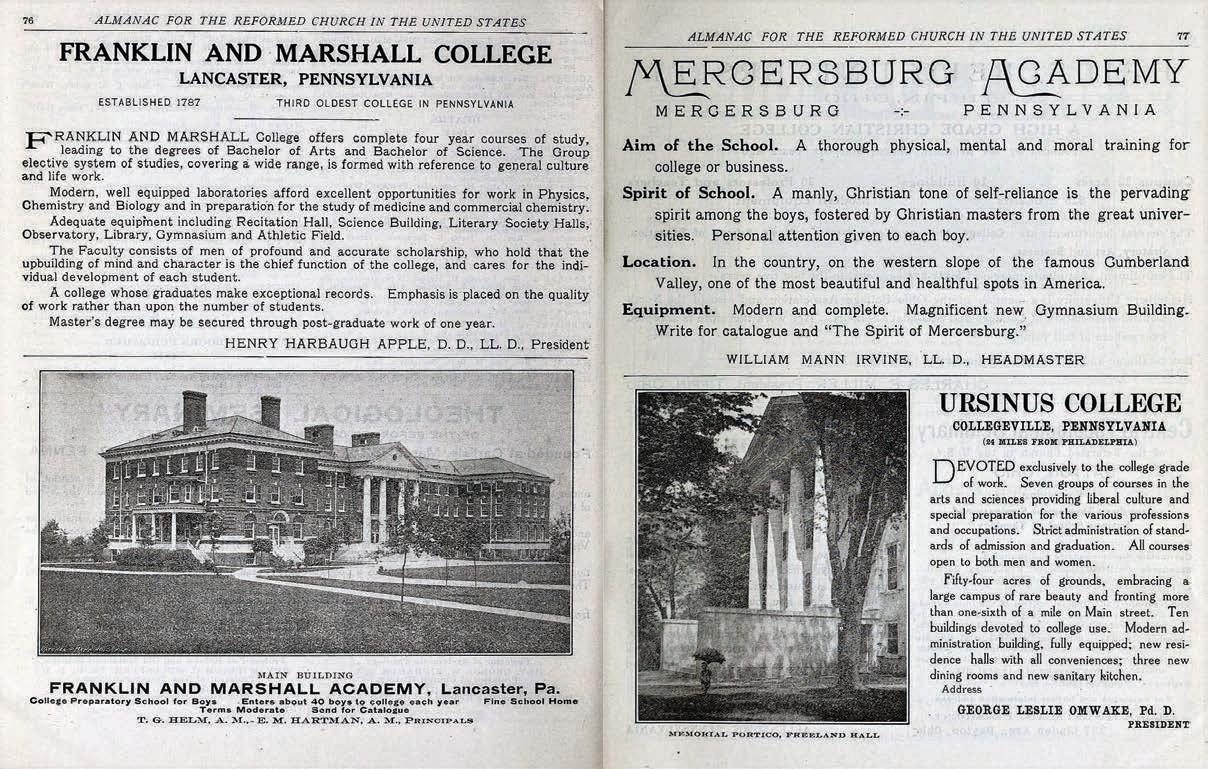
David W. Layman


AUGUST NEANDER (1789–1850), FATHER OF MODERN CHURCH HISTORY
August Neander was born David Mendel to a Jewish family. Deserted by his father, he received an education through the aid of patrons and friends. Neander experienced a dramatic conversion to Christianity in 1806, which deeply impacted every aspect of his life. (His brothers, sisters, and mother followed in his footsteps and also became believers soon after.) He studied with Friedrich Schleiermacher, who influenced Neander’s idea that history is the development of an internal spiritual life. Neander illuminated the religious lives of the major
SCHOLASTIC LEGACY All these schools (above) can trace their roots to Mercersburg and its thinkers.
HISTORY AND THEOLOGY August Neander (farleft) was well known for his historical contributions to the church. The systematic theology of Charles Hodge (left) is still significant today.
actors in the church and how those lives are manifested in the church’s growth. The church is a growing thing, he believed, and even heretics contribute to that growth. The life of the church gives evidence of the spiritual truth of Christianity.
Neander focused particularly on the biblical and historical foundations of Christianity. Beginning his academic career at the University of Heidelberg in 1811, he later joined Schleiermacher at the newly created University of Berlin (1813), where he taught New Testament, church history, and (later) systematic theology. He quickly became one of the most popular lecturers there.
Neander never married and devoted his adult life to scholarship and the cause of the church. His major work, General History of the Christian Religion and Church (1825), chronicled church history up to the Reformation and was published in six volumes. At the end of his life, progressive blindness impeded his ability to work, and he died in 1850. His contributions, however, lived on. Philip Schaff praised Neander as the “father of modern church history.”
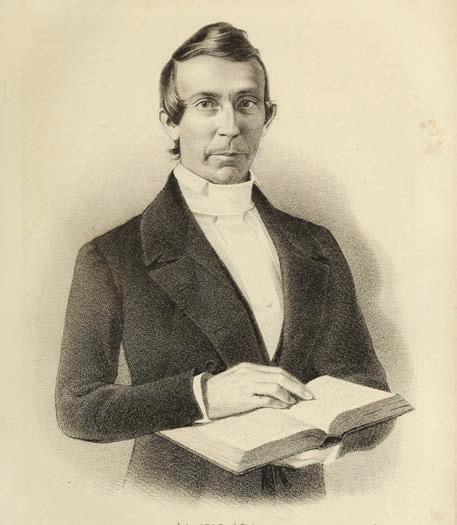
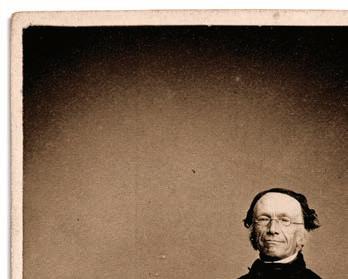


KARL ULLMANN (1796–1865), DEFENDER OF THE GOSPEL
Karl Ullmann followed in the footsteps of Neander by embracing evangelical Protestantism and leading the cause of mediating theology. Ullmann was a part of the United Evangelical Protestant Church of the Grand Duchy of Baden—an 1821 union of Lutheran and Reformed churches that grew in popularity during this time.
He became a professor at Heidelberg in 1821, moved to Halle in 1829, and returned to Heidelberg in 1836. We don’t know if he married; we do know of his close brotherly friendship with poet and preacher Gustav Schwab, probably resulting from shared student experiences at Tübingen. He is described as a Christian humanist, not an original thinker, and was noted for his kind and approachable demeanor. His essay Das Wesen d. Christenthums (“The Nature of Christianity”) attempted to show the “essence” of Christianity. (Nevin published a condensed translation of this work in The Mystical Presence.) It surveyed the interpretations of Kant, Hegel, and the later Hegelians, and supported John Nevin’s conviction that Christianity is not primarily doctrine or morality, but a life—the unity of divinity and humanity in Jesus Christ.
Charles Hodge was a preeminent theologian in the nineteenthcentury Presbyterian Church. He spent his entire teaching


career at Princeton Seminary, with two years off to study in Europe (1826–1828). Nevin substituted for him at Princeton during those years. In spite of this close connection between them, Hodge would become a major critic of Nevin’s Mercersburg theology. He criticized Nevin’s emphasis that “Christianity is a life,” believing this tended toward pantheism.
Hodge was also a proponent of common sense realism For him theology was the logical explanation and organization of the teachings of the Bible, verbally inspired and therefore infallible, and analogous to natural science. One studied the facts (nature, the Bible) and organized those facts into a system. His Systematic Theology (1872–1873), continues to be studied in conservative Presbyterian circles.
Hodge expressed his theological conservatism in the infamous declaration that “a new idea never originated in this seminary.” At the same time, he was known for his warm and deeply emotional piety, communicated to his students in Sunday afternoon addresses. Hodge married a greatgranddaughter of Benjamin Franklin in 1822. Two of his sons later taught at Princeton Seminary.
JOHN WINEBRENNER (1797–1860), NEVIN’S FOIL
John Winebrenner was an American revivalist and religious publisher. Raised in the German Reformed Church, he felt called to ministry and studied at Old Race Street Church in Philadelphia. In 1820 the Reformed Synod ordained Winebrenner and gave him the charge of the Salem Reformed Church in Harrisburg, Pennsylvania.















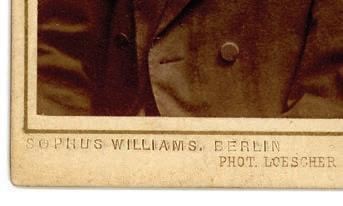


Winebrenner wanted to bring New Measures revivalism into Salem (see pp. 26–29), but the vestry resisted his attempts. In 1825 he and his supporters left to form their own church. His preaching throughout Pennsylvania and Maryland drew many converts from the German Reformed Church, who formed the “Church of God.”
He claimed that “Church of God” was the only true name of the church, and only it had reestablished the true, primitive, and apostolic church. Like other revivalists he was a social reformer, advocating for a greater role for women in the church, for abolition of slavery, and for the temperance and peace movements.
Winebrenner served as a significant foil for John Nevin. In 1842–1843 Winebrenner objected to Nevin’s negative evaluation of his denomination and use of New Measures He wanted Nevin’s respect, and Nevin was not inclined to give it. In 1848 Winebrenner revised a pre-existing work, History of All Denominations in the United States. Nevin saw this collection of essays as an expression of rampant sectarianism. He critiqued it—as well as Winebrenner’s role in publishing it—in 1849 in his article “The Sect System.”
Friedrich August Tholuck was a German Protestant theologian and preacher. After 1826 he spent his entire career at Halle University. Neander and Schleiermacher converted him from skepticism, and his friendship with Moravians helped him see the need for inner awakening and a vital
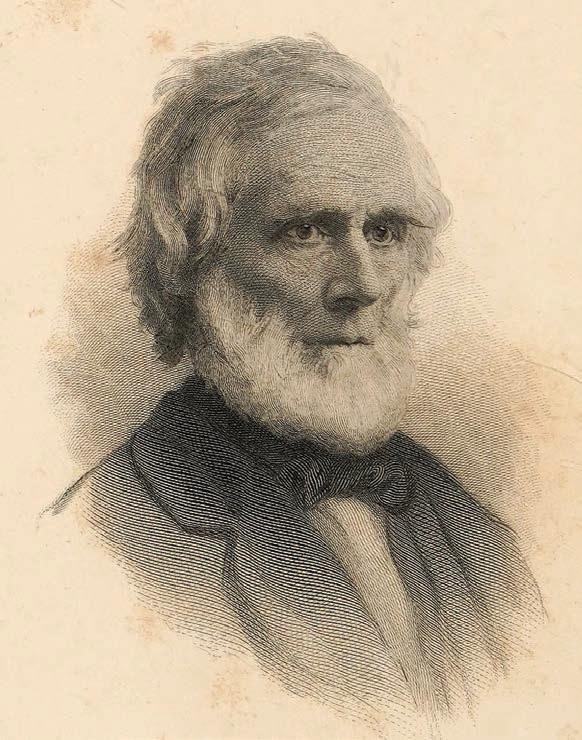
A MODERNIST AND A MEDIATOR Horace Bushnell (above) rejected his Puritan environment in favor of modernism; Isaak Dorner (left) sought to find middle ground through mediating theology.
spiritual life. According to Schaff he adopted the motto of Zinzendorf, “I have but one passion, and that is He, and He alone.” He was a pietist and evangelical who helped move German theology away from Hegel.
His greatest influence was through his personal interaction with students (he had no children). He would take walks with them, invite them to meals, and engage them in intellectual discussion and debate. Both Schaff and Hodge spent time with him in this way.
Horace Bushnell was a Congregationalist pastor and theologian. Although his mother desired him to become a pastor, he lost his faith and turned to law at Yale. In 1831 a revival moved through the college. Bushnell’s “unregenerate” state led to a spiritual crisis resulting in a conversion experience, and he began studies at Yale Divinity School. In 1833 he was ordained pastor at North Church in Hartford, Connecticut.
His view of religious experience was always at odds with the Puritan heritage that prevailed in New England. His 1847 work Christian Nurture questioned the need for a dramatic religious experience and said that a child could be expected to grow up Christian. Bushnell also rejected using reason and logic to dispute theology. He believed that theological language is primarily symbolic and poetic, and he applied this method to major Christian doctrines.
Bushnell resigned his pastorate in 1861 due to health. He is considered a source of Protestant modernism and the social gospel.
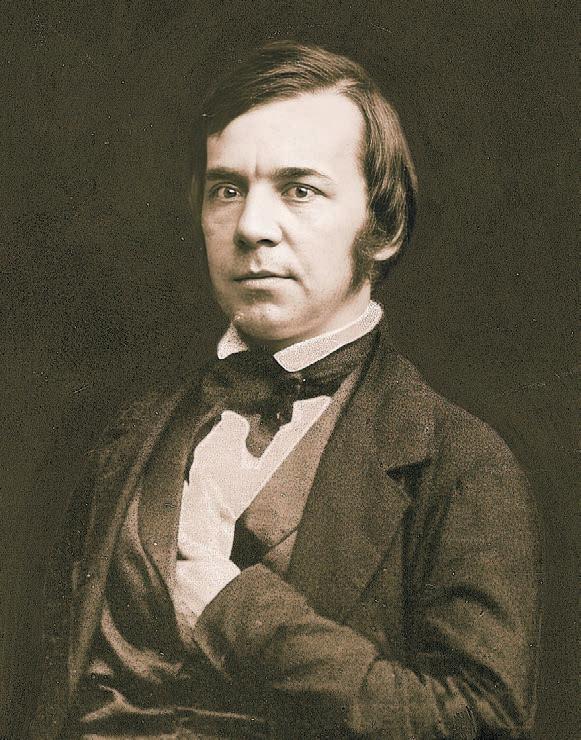
AUGUST DORNER (1809–1884), FACE OF MEDIATING THEOLOGY
Isaak August Dorner became a professor in 1838 at Tübingen. Another professor there was David Friedrich Strauss, who had written The Life of Jesus, arguing that the Gospels, especially the miracle stories, were myths. Dorner responded by declaring that not only is Jesus’s life as recorded in the Gospels historical fact, it is the overarching fact of the Christian life as developed in the history of the church.
Dorner’s understanding of the life and person of Jesus set him against some at Tübingen, but also set him apart as a theologian and historian. He rose quickly in influence as he developed his Christology, his historical and systematic works exemplifying his commitment to mediating theology He published his arguments in History of the Development of the Doctrine of the Person of Christ (1861).
Dorner would go on to teach in multiple German universities. He ended his career at Berlin where he served as a member of the council of the Evangelical State Church in Prussia. He died in 1884, known as one of the foremost representatives of mediating theology
Frederick Augustus Rauch was born in Germany. Both his father and maternal grandfather were German Reformed pastors. Initially his studies were in philology (critical study of Greek and Latin texts), but after receiving his doctorate, his interests changed to philosophy. However, a dispute with a senior faculty member cut his fledgling academic career short, and he fled to America to start a new life.
He found his way to the large German community in southeastern Pennsylvania, settling down at the classical college and seminary of the German Reformed Church (eventually located in Mercersburg). Nevin joined him there in the spring of 1840. Rauch’s health rapidly declined (partially
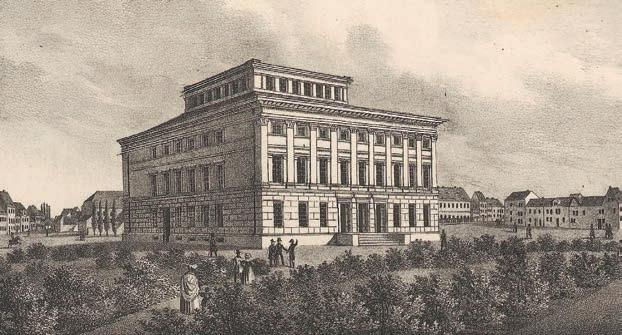
IN THE HALLS OF HALLE Many of Mercersburg’s influencers were connected with Halle University (above), including Neander, Ullmann, and Tholuck.
PARTING WAYS
J. H. A. Bomberger (left) supported Nevin for many years, but could not overcome their disagreement over the provisional liturgy.
from overwork), and he died on March 2, 1841. His lecture notes were the basis of his major work, Psychology (1840), in which he stated a Hegelian-based idealistic philosophy.
J. H. A. Bomberger was the first graduate of Marshall College (1837) after its move to Mercersburg. He was a faithful son and active minister of the German Reformed Church, most notably at the Old Race Street Church in Philadelphia (1854–1870). He served as president of the Board of Home Missions and in parachurch societies such as the American Bible Society.
He supported Mercersburg thought in the church for two decades. In January 1853 he wrote a long, two-part essay on “Dr. Nevin and His Antagonists,” responding to charges of theological error. He chaired the committee (1848–1849) that began the decades-long process of writing a new church liturgy, bringing a poetic sensibility and skill as an editor. However, he became the spokesman for many “evangelical” German Reformed pastors who believed that the new liturgy was too ritualistic and failed to build on historical Reformed resources. The essence of his argument is expressed in the titles of two polemics—The Revised Liturgy: A History and Criticism of the Ritualistic Movement in the German Reformed Church and Reformed, Not Ritualistic: Apostolic, Not Patristic (both 1867).
In 1870 this segment of the leadership formed a new college to represent its interests and vision, Ursinus College (Collegeville, Pennsylvania). Bomberger became its first president and served there until his death. CH
David W. Layman is a retired lecturer in religious studies and philosophy and a general editor of the Mercersburg Theology Study Series.














The influence of Nevin, Schaff, and the Mercersburg movement was limited in its heyday, but a growing number of believers across denominational lines and faith traditions are encountering the movement and finding it has a lot to teach the church today. Christian History asked a few of those people some questions to find out more.
Jennifer Woodruff Tait is an author, senior editor of Christian History magazine, web editor for the Theology of Work Project, and a priest in the Episcopal Church. William B. Evans is an author, retired professor of Bible and religion, a retired minister in the Presbyterian Church (USA), and a member of the editorial board of The New Mercersburg Review. John H. Armstrong is an author, editor, mentor, and retired minister in the Reformed Church in America (RCA).
CH: What first drew you to the Mercersburg theology and movement?
WILLIAM B. EVANS: I first heard about Mercersburg when I was in seminary, when I happened to read The Anxious Bench by John W. Nevin. Having been raised in a pietistic
ELEVATING THE MYSTICAL PRESENCE Mercersburg theology emphasized the sacraments, especially the Lord’s Supper (imagined in this 17th-c. painting at left).
evangelical context, I found Nevin’s emphasis on the objectivities of Christianity—the church and the sacraments—to be refreshing, and his critique of revivalist/conversionist subjectivity was remarkably insightful.
JENNIFER WOODRUFF TAIT: When I first discovered it, which I did about 25 years ago also through reading Nevin’s The Anxious Bench, it was a revelation to me that some of my own critiques of overly emotional megachurch culture had been anticipated by a soulmate from a century prior—and not only that, but a soulmate who was also a Protestant.
JOHN H. ARMSTRONG: In my early twenties, I had embraced a fairly rigid view of Reformed theology, but I soon saw how this divided the church into continuing divisions. When I came to see how important unity is for a healthy faith (cf. John 17:21–24), Mercersburg helped me understand this more clearly.
CH: What does Mercersburg mean to you spiritually?
JLWT: This is closely connected to the first question. I was raised in the 1970s–1980s Protestant mainline and deeply formed by college encounters with evangelicalism, and both of those traditions were pretty sacramentally thin. Through the Mercersburg writers, I came to realize that it was not illegitimate for me as a Protestant to be deeply drawn to sacramental and liturgical Christianity, and to the historical continuity of the church. I am forever grateful to them for this realization, which has guided me spiritually for the last 20-odd years.
JHA: It helped to free me from fear and rigid confessionalism.
WBE: Yes, I have found it liberating! It frees one from the pressure to “gin up” some sort of religious experience, or to conform to some particular morphology of conversion.
CH: What would you say the core guiding principle of the movement was, if you had to distill it down to one sentence?
JHA: Christ saves through his person, not by theories of theology.
JLWT: Right. And Christianity is not about your feelings, but about an objective encounter with the living Christ, whom we encounter through the historic church and experience in the Eucharist.

NEW MEASURES, OR MEASURED FAITH? Mercersburg critiqued the dramatic conversion experiences associated with revivalism (such as Finney’s, above). Present-day Christians uneasy with current revivalistic practices have found an answer in Mercersburg.
WBE: Without doubt the central principle or dogma of Mercersburg is the Incarnation. In other words it’s all about Jesus! Nevin and Schaff were convinced that God has indeed stepped into history, and that the Incarnation introduced a new, decisive, and transforming reality into human existence.
CH: What would you recommend people read to understand more about what Nevin and Schaff in particular were getting at?
JLWT: For Nevin, the two books that blew the top off of my head were The Anxious Bench, as I mentioned, and The Mystical Presence, which is one of the best books about the Eucharist I’ve ever read. I haven’t read all of Schaff’s History of the Christian Church, but what I have read has been deeply formative on my own historical thinking and writing.
WBE: It’s always best to get one’s theology straight, though some good secondary studies are available. Three key texts by the principal figures provide a solid introduction to the movement. First, as Jennifer said, there is The Anxious Bench. Second, there is Schaff’s presentation of a developmental approach to church history in his The Principle of Protestantism. And third, there is Nevin’s defense of a sacramental approach to Christianity—The Mystical Presence: A Vindication of the Reformed or Calvinistic Doctrine of the Holy Eucharist. Note that all three of these texts emerged within a three-year period of intense theological creativity! And all of these texts are now available in modern critical editions as part of the Mercersburg Theology Study Series.
JHA: And besides, of course, these actual works of Nevin and Schaff, I recommend William B. Evans, A Companion to the Mercersburg Movement. Cascade, the publisher of this book, is still publishing volumes from the movement.
REFORMED AND CATHOLIC? Philip Schaff’s writings (bottom) anticipated a Christianity that could see the best in all its streams, and could one day find balance in a theological synthesis. Ecumenical councils of the 20th c. (below) sought to find common ground, putting Schaff’s vision into action.







Churches in Conference by an observer
CH: Why do you think the sacramental/liturgical/ecumenical approach of Nevin and Schaff (for example, their views about the relationship between Protestantism and Catholicism, and/or about the Real Presence of Christ in the Eucharist) was met with such opposition from other Reformed thinkers in the nineteenth century? Do you see any parallels with church struggles today?
WBE: In their context Nevin and Schaff were both accused of “catholicizing.” This was a period in which traditional Protestant antipathy to Rome coalesced in toxic ways with nativist opposition to Catholic immigration and anything that seemed to smack of Catholicism (e.g., the notion that the sacraments might actually do something) provoked deep suspicion. Moreover much of American Protestantism had moved in a profoundly individualistic direction and was shaped by a philosophy [Scottish common sense realism; see “How to speak ‘Mercersburg,’” inside front cover] that had little room for mystery.
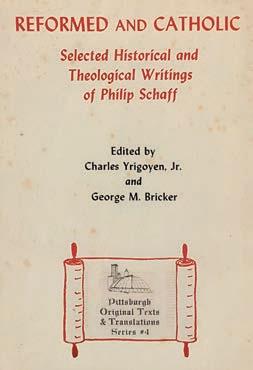





Nevin and Schaff were advocating for an “evangelical catholicism” that drew from the best of early, medieval, and Reformation Christianity. Thus they were able to retrieve a corporate, churchly, sacramental sensibility and liturgical worship in ways that continue to speak powerfully to the church today, if we will listen. To the extent that American Christianity, particularly in its evangelical form, is ahistorical and ecclesiologically challenged, Mercersburg continues to be relevant.








JLWT: I think the fear of people sliding down a slippery slope toward Catholicism led many Protestants in the nineteenth century (in general, not just Reformed ones) to draw sharp boundaries around what constituted acceptable forms of Protestantism—boundaries that were much more stringent than the boundaries drawn by the Protestant Reformers themselves. (This is basically Nevin’s argument in The Mystical Presence.) I think it behooves us to ask ourselves today if we are ruling out orthodox, historically grounded Christian doctrines and disciplines because we think they will make us look too much like groups we fear.
JHA: Yes, I see clear parallels with that today. The dominant American expression of Reformed theology in the nineteenth century was focused on opposition to Catholic theology and the “presence of Christ” in the Eucharist. This is still the case in many modern movements. Mercersburg helps open the door to the new ecumenical movement happening in our time.
CH: Are there any organizations, groups, or conferences active today that explore the legacy of Mercersburg?
WBE: A Mercersburg Society was formed in 1983 by a group of pastors, scholars, and laypeople who wanted a forum to discuss the Mercersburg theology and its potential implications for today. The impulse here was never merely historical; they were convinced that the Mercersburg ethos has something to say to the challenges of the twentieth and twenty-first centuries. The society hosts an annual Mercersburg Convocation and publishes The New Mercersburg Review
JHA: And while it is small, the Mercersburg Society still carries considerable influence. I had the privilege of spending time scanning the great collection of original resources at Franklin and Marshall College in Lancaster, Pennsylvania, some years ago.
CH: The Mercersburg movement was a nineteenth-century phenomenon. What limitations or challenges do you see in bringing a Mercersburg perspective to bear on the twenty-firstcentury church context?

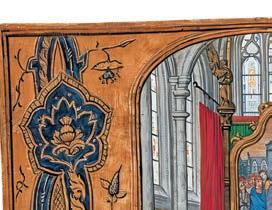
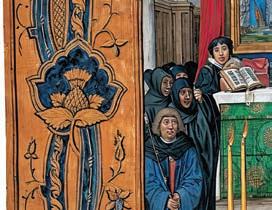
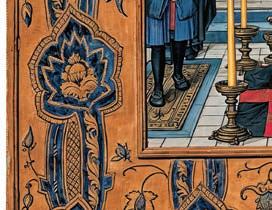

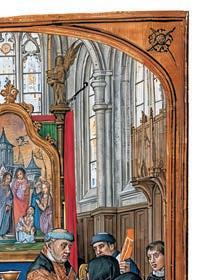
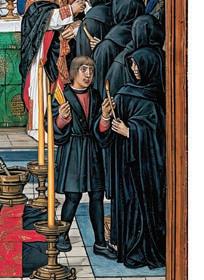
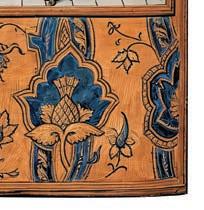
A SHARED PAST Protestant Reformers had some shared liturgical practices with Catholicism (such as above). 19th-c. American Protestantism often made sharper distinctions than did the Reformers, which Mercersburg theologians challenged.
NOT ONLY AMISH COUNTRY History of the movement and of the German Reformed Church lives on in Lancaster, Pennsylvania. This 1856 painting (above left) captures the city’s rural feel, but many Reformed churches lined the streets then and remain today.
JLWT: Fewer than you might think. While it’s important to understand the historical context of any movement, it’s also important to remember that Christians from the past are our brothers and sisters in Christ grappling with similar problems of doctrine and discipleship (end of Christian History editor soapbox). I think the Mercersburg emphasis on a historic, structured, rational, sacramental faith has a lot to say to the modern church.
JHA: Yes, but I think the challenge of the past remains. Can we embrace theological perspectives that will allow us to seek oneness in our common faith?
WBE: Right. There are at least two challenges here, and I explored these at some length in my book A Companion to the Mercersburg Theology. First, Nevin and Schaff were both deeply influenced by German idealist philosophy, which gave them intellectual tools for thinking in more corporate, sacramental, and developmental ways. Of course

MERCERSBURG TODAY The seminary at Mercersburg experienced a number of physical transitions. Lancaster Theological Seminary (above) continues its spiritual legacy. You can also find Mercersburg resources at other academic institutions influenced by Mercersburg thinkers, such as Franklin and Marshall College (above right), where John Nevin served as president.
most people today are not followers of Hegel and Schelling! I would argue that Nevin and Schaff used idealism as a tool without being slavishly devoted to it.
Second, Nevin in particular was rather elitist and hierarchical in his thinking, and that sort of thing provokes deep suspicion from many today. Nevin was troubled by the sectarian chaos of the American Protestant Christianity of his day (in which any Tom, Dick, or Harry could start their own church), and his rather hierarchical view of the church was his way of trying to impose some order. But this hierarchical and somewhat mechanical view of church authority actually stood in tension with Nevin’s focus on the Incarnation. Nevin’s contemporary, Alexis de Tocqueville, perhaps said it best when he wrote, “All the great writers of antiquity were a part of the aristocracy of masters, or at least they saw that aristocracy as established without dispute before their eyes and it was necessary [for] Jesus Christ [to] come to earth to make it understood that all members of the human species are naturally alike and equal.”
CH: What do you personally think is the most lasting legacy of Mercersburg?
JLWT: I think the most lasting legacy of Mercersburg is the space it carves out for those of us who are deeply sacramental, deeply ecumenical, deeply connected to the church and its traditions, and deeply Protestant. (I owe much of my fervent Eucharistic piety to John and Charles Wesley, to be sure, but I owe most of the rest of it to John Williamson Nevin.) I believe that interest in the Mercersburg theology persists because people wearied by today’s religious


CHURCH LIKE A MUSTARD SEED Emanuel Gerhart used Jesus’s mustard seed metaphor (above) as a way to describe the unfolding growth of the church. The hopeful theology of Mercersburg lives on in ecumenical movements today.
heirs of Finney’s New Measures still find in Nevin’s and Schaff’s writings a guide to finding, and living, a saving life in Christ.
WBE: For me the legacy of Mercersburg is not so much a set of particular theological propositions (though I often find myself agreeing with Nevin and Schaff). Rather, it is an ethos, a way of doing theology, a “habitus” as classical theology would term it. The Mercersburg theology took Scripture, and the tradition of the church, and the ongoing doxological, liturgical life of the church seriously to address the needs of their time. We can certainly learn from that today! CH













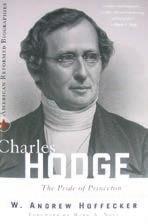
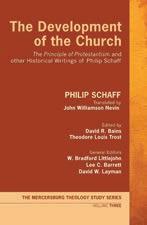
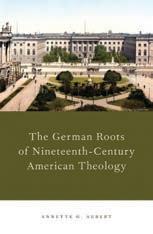

BOOKS
General overviews of the Mercersburg movement, theology, liturgy, and legacy can be found in James Hastings Nichols, Romanticism in American Theology: Nevin and Schaff at Mercersburg (1961); and William B. Evans, A Companion to the Mercersburg Theology: Evangelical Catholicism in the Mid-Nineteenth Century (2019).
Learn more about the philosophical and theological movements that influenced Mercersburg thinkers with Howard J. B. Ziegler, Frederick Augustus Rauch: American Hegelian (1953); William DiPuccio, The Interior Sense of Scripture: The Sacred Hermeneutics of John W. Nevin (1998); Martin Redeker, Schleiermacher: Life and Thought (1973); B. A. Gerrish, A Prince of the Church: Schleiermacher and the Beginnings of Modern Theology (2001); Linden DeBie, Speculative Theology and Common-Sense Religion (2008); and Karl Ameriks, ed., The Cambridge Companion to German Idealism (2017).
Mercersburg’s idealist philosophical approach was framed against Scottish common sense realism, which is explained in S. A. Grave, The Scottish Philosophy of Common Sense (1960). See also Theodore Dwight Bozeman, Protestants in an Age of Science: The Baconian Ideal and Ante-bellum American Religious Thought (1977); and Jennifer Woodruff Tait, The Poisoned Chalice: Eucharistic Grape Juice and Common-Sense Realism in Victorian Methodism (2011).
Read about John Williamson Nevin in Theodore Appel, The Life and Work of John Williamson Nevin (1889); Sam Hamstra Jr. and Arie Griffioen, eds., Reformed Confessionalism in Nineteenth-Century America: Essays on the Thought of John Williamson Nevin (1996); Richard Wentz, John Williamson Nevin: American Theologian (1997); Darryl Hart, John Williamson Nevin: High Church Calvinist (2005); and Linden DeBie, John Williamson Nevin (2023).


Discover more on Philip Schaff in David Schaff, The Life of Philip Schaff (1897); George Shriver, Philip Schaff: Christian Scholar and Ecumenical Prophet (1988); and Stephen R. Graham, Cosmos in the Chaos: Philip Schaff’s Interpretation of Nineteenth-Century American Religion (1995).
While you can read a wealth of Nevin’s and Schaff’s writings published by Wipf and Stock, a few anthologies and select works include James Hastings Nichols, ed., The Mercersburg Theology (1966); Charles Yrigoyen Jr. and George Bricker, eds., Catholic and Reformed: Selected Theological Writings of John Williamson Nevin (1978) and Reformed and Catholic: Selected Historical and Theological Writings of Philip Schaff (1979); Augustine Thompson, ed., The Anxious Bench, Antichrist and the Sermon Catholic Unity (2000); Sam Hamstra Jr., ed., The Reformed Pastor: Lectures on Pastoral Theology by John Williamson Nevin (2006); Philip Schaff, History of the Christian Church (2006); Linden DeBie and W. Bradford Littlejohn, eds., The Mystical Presence (2012); David Bains and Theodore Louis Trost, eds., The Development of the Church: “The Principle of Protestantism and Other Historical Writings of Philip Schaff (2017); and Lee Barrett, ed., The Heidelberg Catechism: The Mercersburg Understanding of the German Reformed Tradition (2021).
The Puritans and the First Great Awakening play an important part in Mercersburg’s story. Read Edmund Morgan, Visible Saints: The History of a Puritan Idea (1963); Patricia Caldwell, The Puritan Conversion Narrative: The Beginnings of American Expression (1983); and Harry Stout, The Divine Dramatist: George Whitefield and the Rise of Modern Evangelicalism (1991) to learn more.
For more on revivalism and New Measures, read Whitney R. Cross, The Burned-Over District: The Social and Intellectual History of Enthusiastic Religion in Western New
York, 1800–1850 (1950); Robert Caldwell, Theologies of the American Revivalists (2017); Ted Smith, The New Measures (2007); Leigh Eric Schmidt, Holy Fairs: Scotland and the Making of American Revivalism (2001); and Charles Hambrick-Stowe, Charles G. Finney and the Spirit of American Evangelicalism (1996).
You can also get a general overview of eighteenth- and nineteenth-century religion in America from Nathan Hatch, The Democratization of American Christianity (1989) and Mark Noll, America’s God (2002).
Discover more about Emanuel Gerhart in Annette Aubert, The German Roots of Nineteenth-Century American Theology (2013). You can also read his key writings in Annette Aubert, ed., Christocentric Reformed Theology in NineteenthCentury America (2021).
As for the movement’s critics, read about Charles Hodge in William B. Evans, Imputation and Impartation: Union with Christ in American Reformed Theology (2008); W. Bradford Littlejohn, The Mercersburg Theology and the Quest for Reformed Catholicity (2009); Paul Gutjahr, Charles Hodge: Guardian of American Orthodoxy (2011); W. Andrew Hoffecker, Charles Hodge: The Pride of Princeton (2011); Linden DeBie and W. Bradford Littlejohn, eds., Coena Mystica: Debating Reformed Eucharistic Theology (2013); and Owen Anderson, Reason and Faith in the Theology of Charles Hodge (2014).
Later Mercersburg-related conflict within the German Reformed Church in America tended to focus on liturgical matters. For more on the liturgical controversy, see Jack Martin Maxwell, Worship and Reformed Theology: The Liturgical Lessons of Mercersburg (1976).
129: Modern Amnesia
138: America’s Book: Bible and the Nation
143: America’s Book: Bible and the Church
151: Awakenings


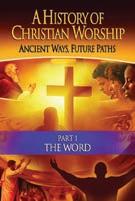



Two separate video series, History of Christianity and History of Christian Worship, include topics important to Schaff and Nevin. Both also include downloadable study guides. You can also look at the Mercersburg movement’s revival context in Great Awakening: Spiritual Revival in Colonial America , Penn’s Seed, and People of Faith: Christianity in America. For Reformation and sacramental context, check out Calvin, Zwingli, and Brother Klaus. Some of these titles are only available via digital download; you may access more content by streaming on Redeem TV.








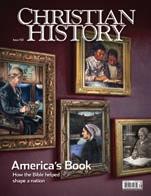






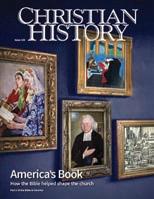

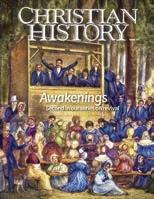

23: Spiritual Awakenings
45: Camp Meetings







Check out these past issues of Christian History for more content related to this issue—all are available online; some are available for purchase as hard copies.
20: Charles Grandison Finney
72: How We Got Our History
82: Phoebe Palmer and the Holiness Movement

Websites dedicated to continuing and archiving the Mercersburg movement include The Mercersburg Society and Mercersburg Historical Society. You may also learn more about the German Reformed Church with this short course developed by the United Church of Christ. Easily access the entire Mercersburg Liturgy online, and find writings on Mercersburg theology at Mercersburg Today. The digital archive at Lancaster Theological Seminary is another helpful collection.
Public-domain primary source documents mentioned in this issue can be found in the usual collections, including the Christian Classics Ethereal Library, Gutenberg.org, and Internet Modern Sourcebook. Finally, learn more at American Society of Church History, which Philip Schaff founded and where he served as its first president. CH










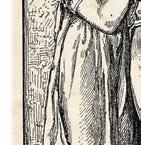
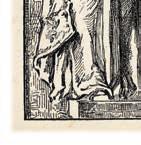
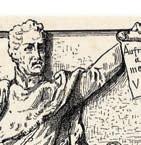

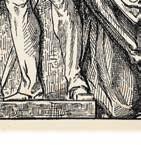
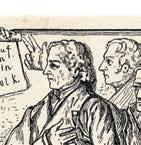

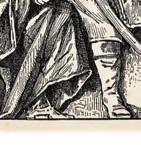
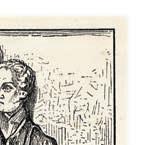


In a group or on your own, use these questions to help you reflect on the legacy of the Mercersburg movement.
1. “How to speak ‘Mercersburg,’” inside the front cover, defined several philosophical and theological ideas present in this issue. Can you trace any of the defined philosophies in your own faith tradition? How might these ideas have shaped your understanding of the Bible?
2. Who were the main figures and what were the main ideas of the Mercersburg movement (pp. 7–12)? Which, if any, of these ideas influence American religion today?
3. Summarize Charles Hodges’s critique of The Mystical Presence (p. 12). How did Nevin’s response answer his critique? Which, in your opinion, is more compelling?
4. How does Nevin’s Christocentric argument (p. 13) reflect the influence of idealist philosophy?
5. What were John Nevin’s theological views, and what were their practical implications (pp. 14–17)? Why did he face disagreement and controversy?
6. What did Philip Schaff say to the German Reformed Church synod in his inaugural address (pp. 19–22; p. 23)? What was the response he received and why?
“TO MY PEOPLE” In this illustration, King Frederick Wilhelm III appeals to the German and Prussian peoples as one. Beside him are influential German thinkers, including Schleiermacher and Hegel. This appeal, although political, speaks to the philosophical identity of 19th-c. Germans. The German theologians in this issue, such as Philip Schaff, carried this identity with them to the German Reformed Church in North America.
7. Describe New Measures revivalism (pp. 26–29). What was Nevin’s answer to this form of revivalism?
8. In the excerpt from The Anxious Bench (p. 30), how does Nevin differentiate revivalism from revival? Do you agree? Why or why not?
9. Discuss the conflict over the provisional liturgy in the German Reformed Church. How did this “worship war” resolve (pp. 31–33)?
10. What surprised you about the Mercersburg liturgy (p. 34)? Does your faith tradition use a written liturgy? If so, how is it similar or different?
11. Who was Emanuel Gerhart (pp. 35–37)? How did he contribute to the Mercersburg movement?
12. Who is the most interesting figure featured in the gallery (pp. 38–41) and why?
13. Take a look at the roundtable discussion on pp. 42–45. What did you learn about the legacy of the Mercersburg movement today? How has Mercersburg shaped our interviewees? Do you find yourself drawn to the movement as they were?
14. How has the Mercersburg movement helped you think about ecumenism? Is church unity, as the movement imagined it, possible? Why or why not?
15. Of the excerpts shared in this issue, which one resonated with you the most and why? CH





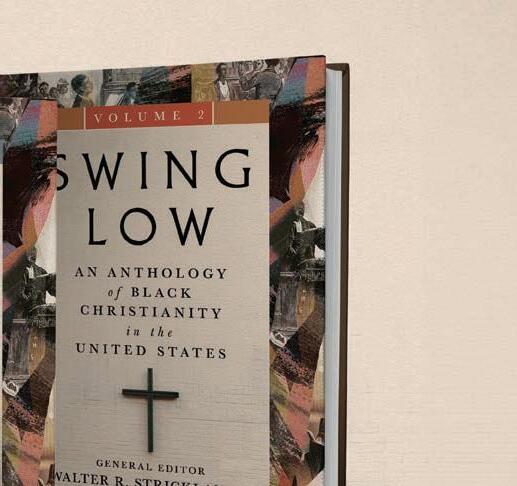


T HEDYNAMICWITNESSOFTHE B LACK
CHURCH is an essential part of Christian history. In this groundbreaking two-volume work, Walter R. Strickland II presents a theological-intellectual history of African American Christianity.
V OLUME 1 , a narrative history, explores five theological anchors of Black Christianity from the 1600s to the present. V OLUME 2 , an anthology of historical primary sources, allows us to listen to Black Christianity in its own words.


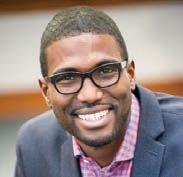
W ALTER R. S TRICKLAND II
P RAISE for S WING L OW , V OLUMES 1 & 2


—MARK NOLL, author of America’s Book: The Rise and Decline of a Bible Civilization, 1794-1911
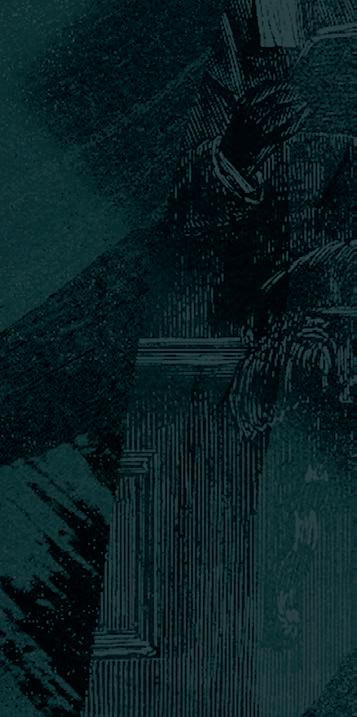
“Walter Strickland’s narrative of Black American Christianity provides a well-researched, carefully organized, and immensely informative history of an immensely important subject. The accompanying volume of well-chosen and well-introduced documents makes a valuable project even more useful.”


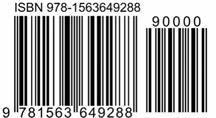
Subscriber #
Source Code PO

Discover the roots of your faith with Christian History magazine, one story at a time
Each issue of Christian History connects you to your past—the 2,000-year story of the church—through vivid images, accessible storytelling, and careful research you can trust. For more than 40 years, Christian History has been telling the story of the church for the people of the church, one topic at a time. Discover just how deep your roots run today!
Enjoy a FREE one-year subscription with code CH155.* *CH is made possible by generous donations from our readers. Free one-year subscriptions available in U.S. only; a free sample issue can be sent to all other international destinations.
